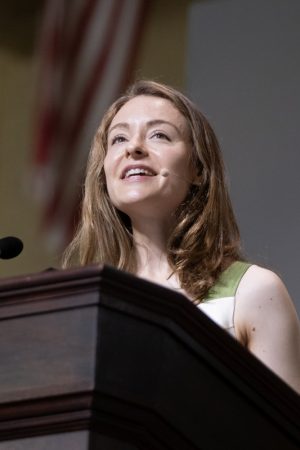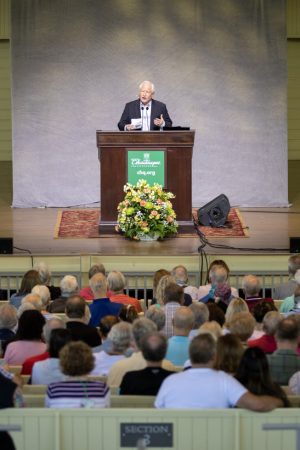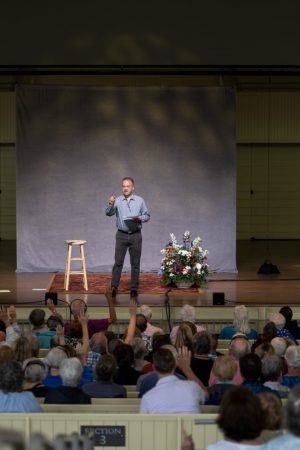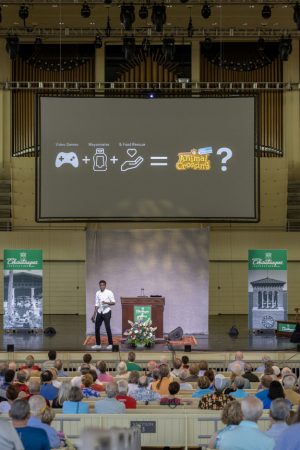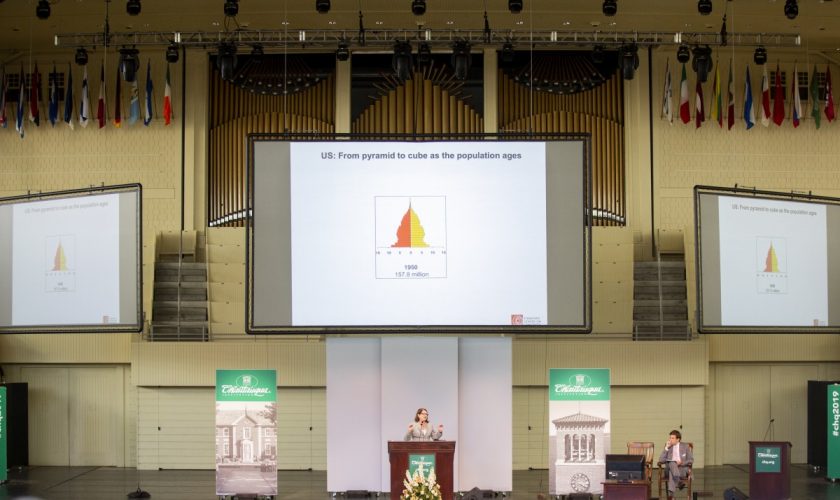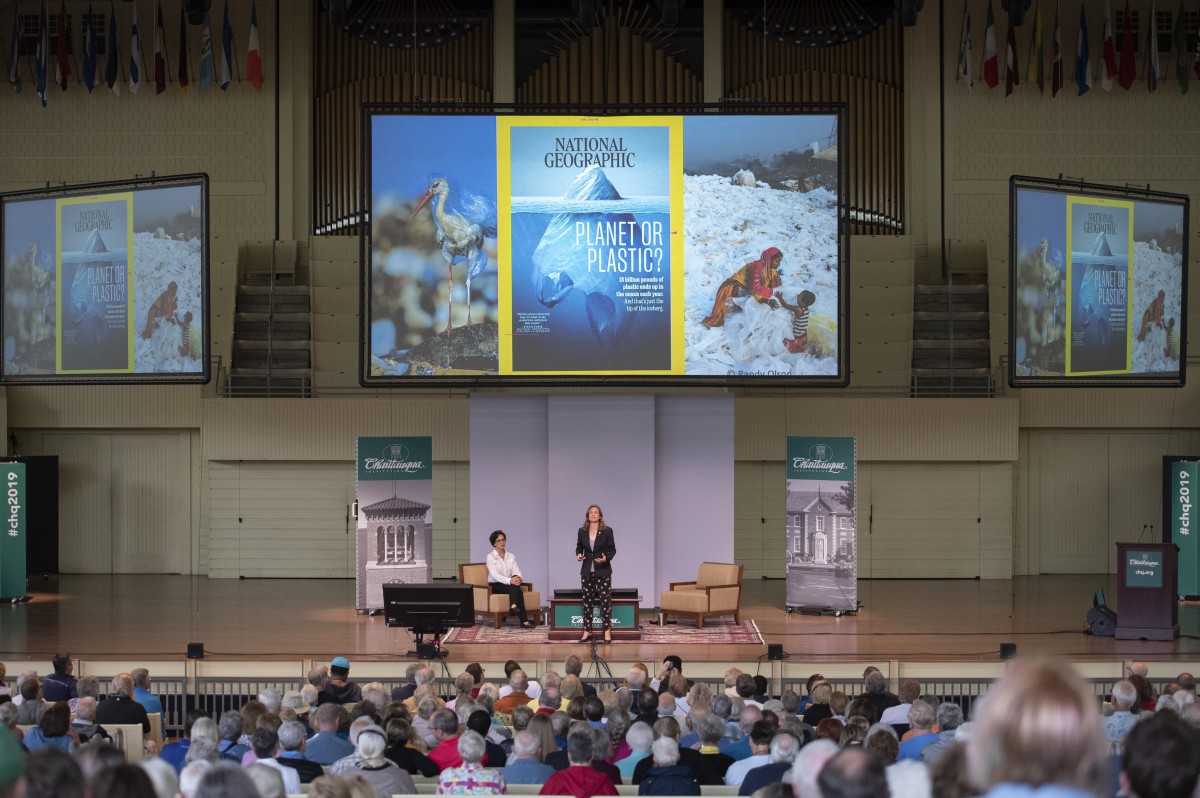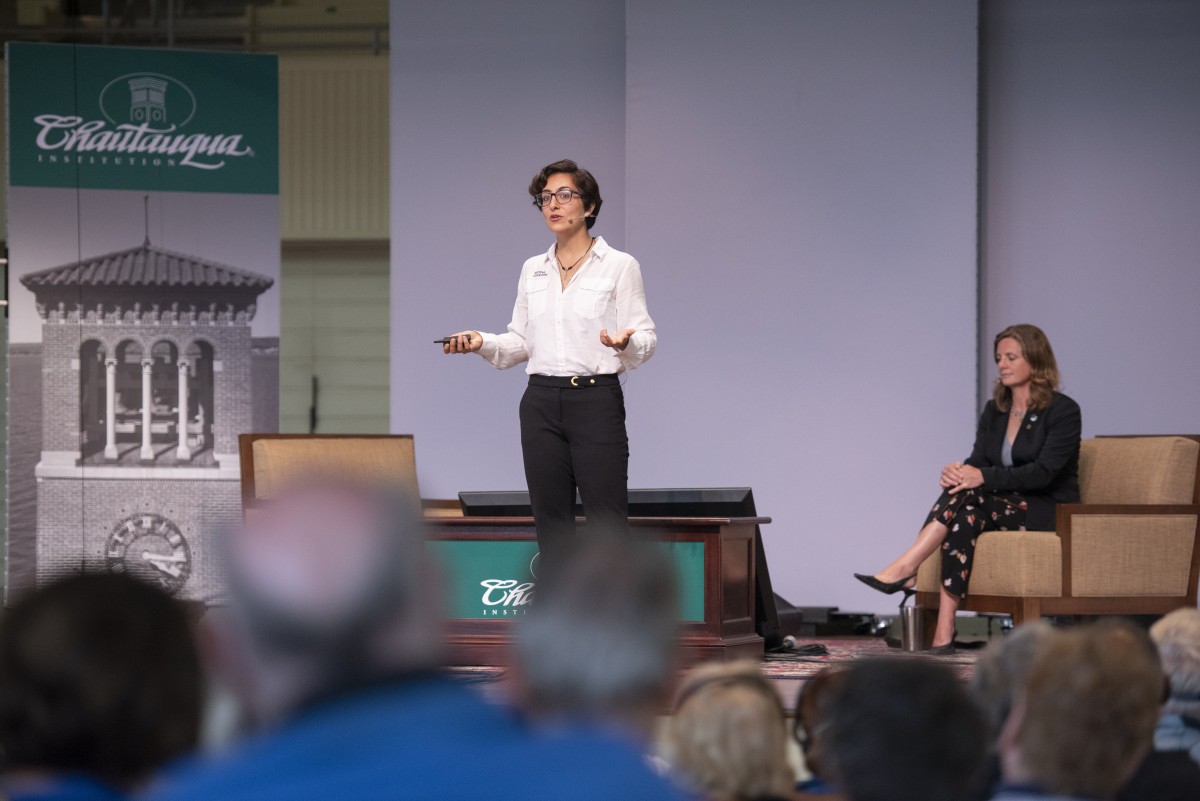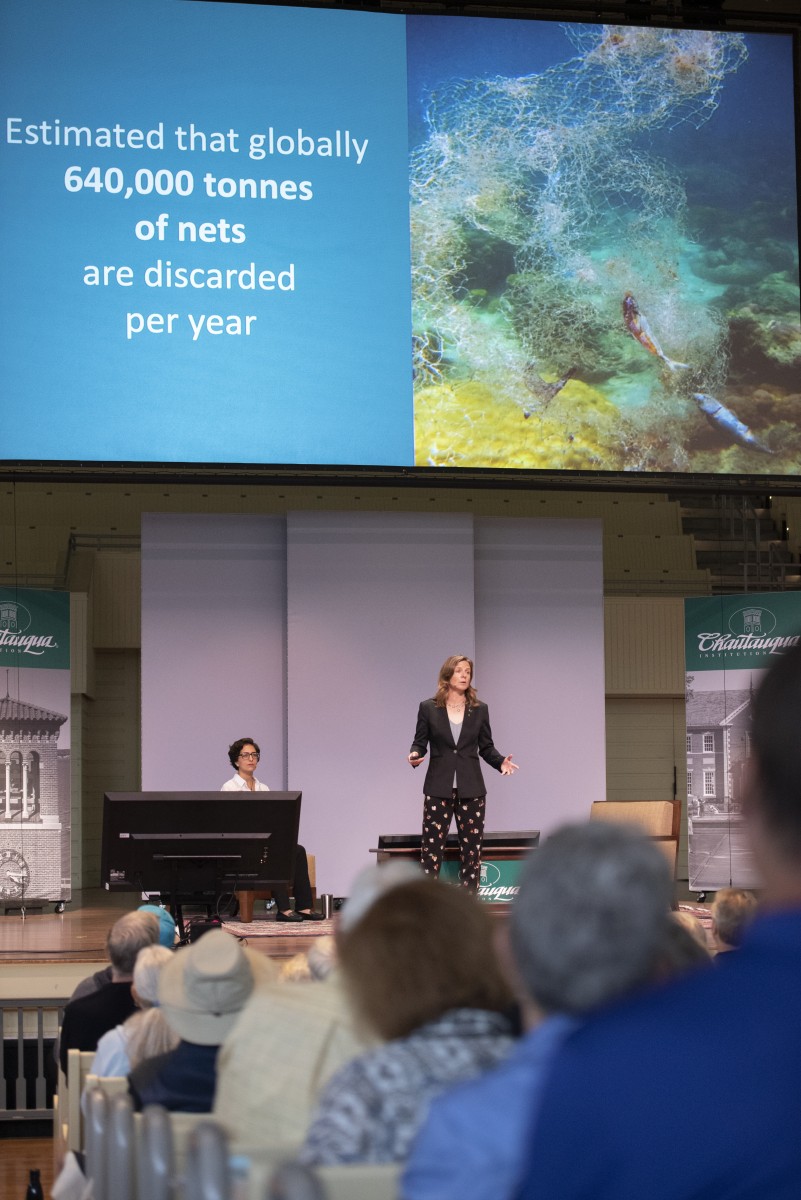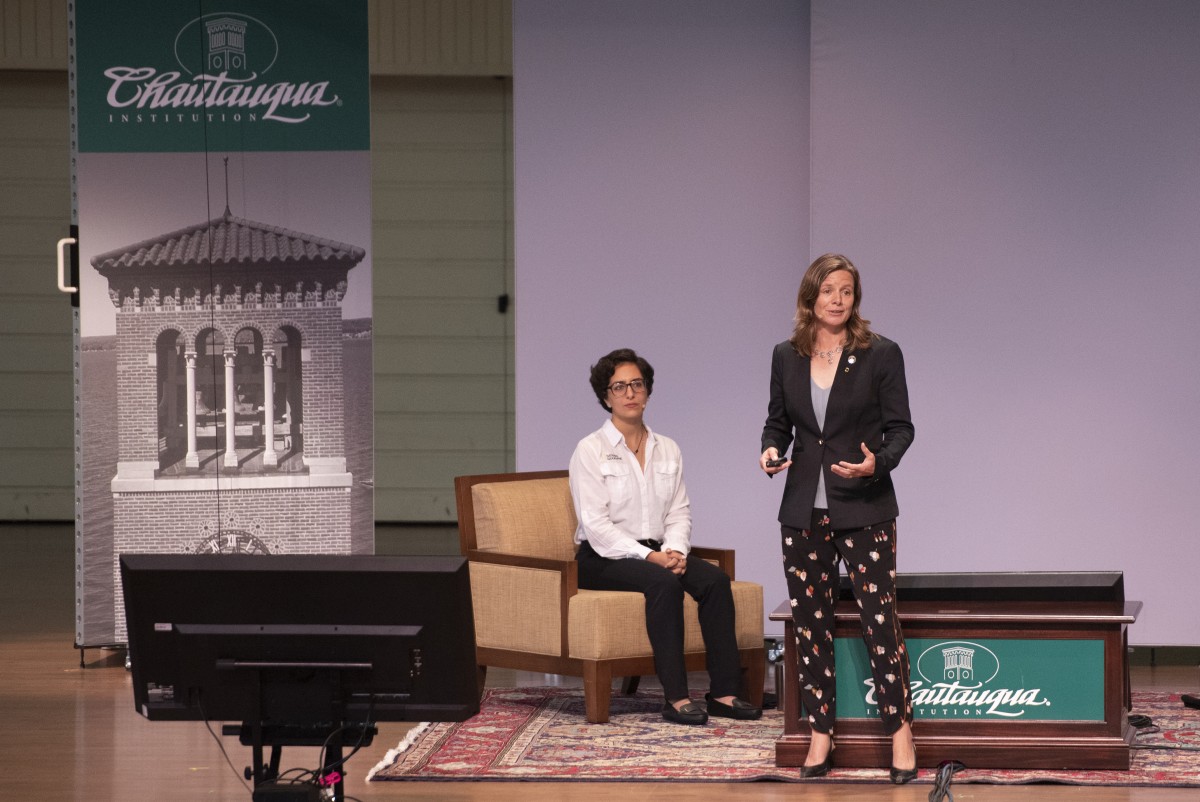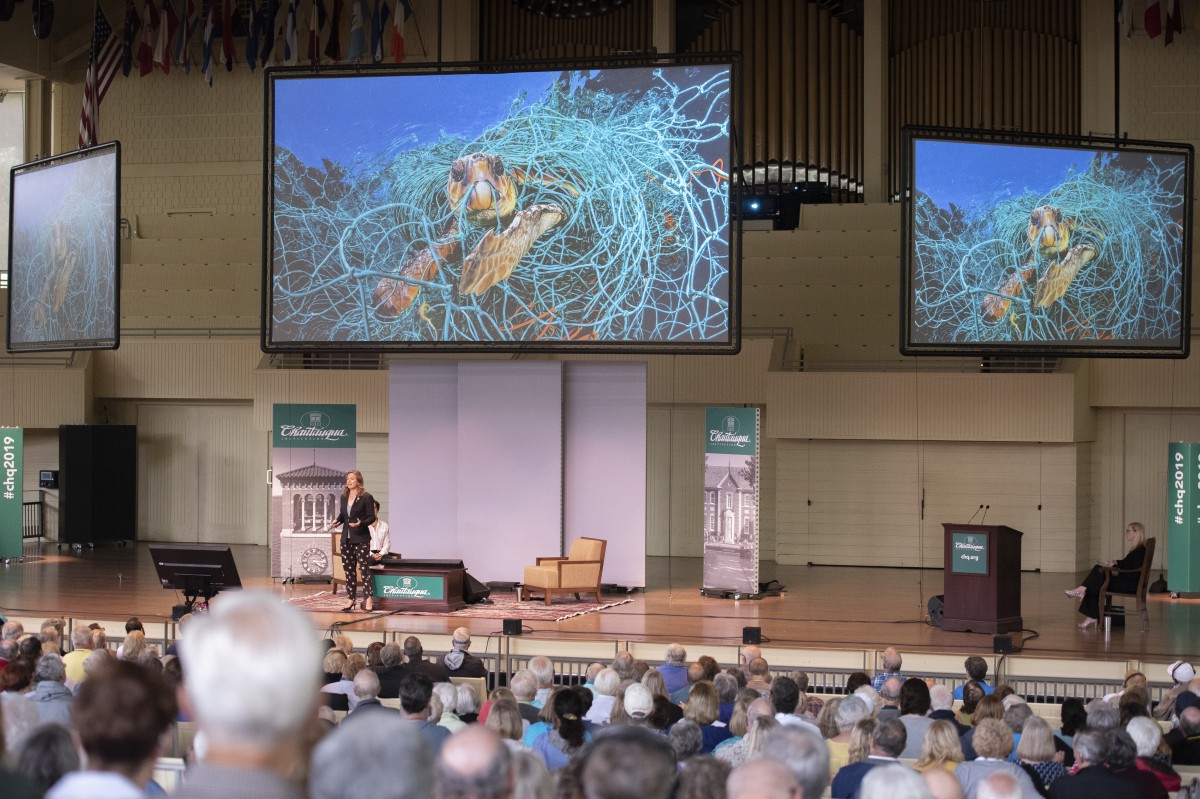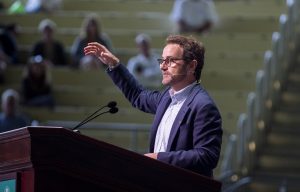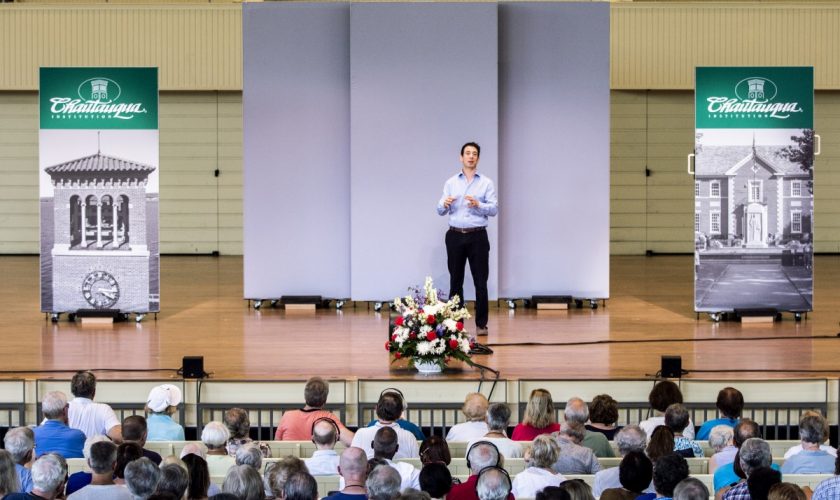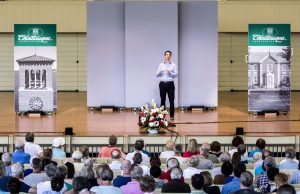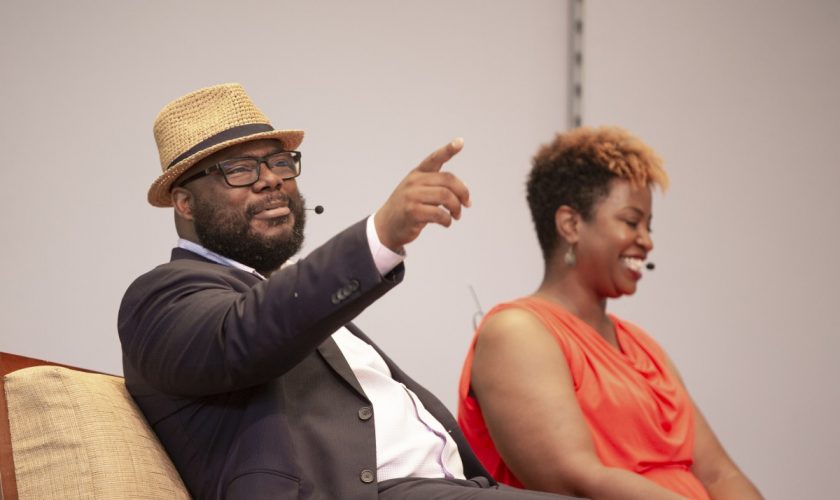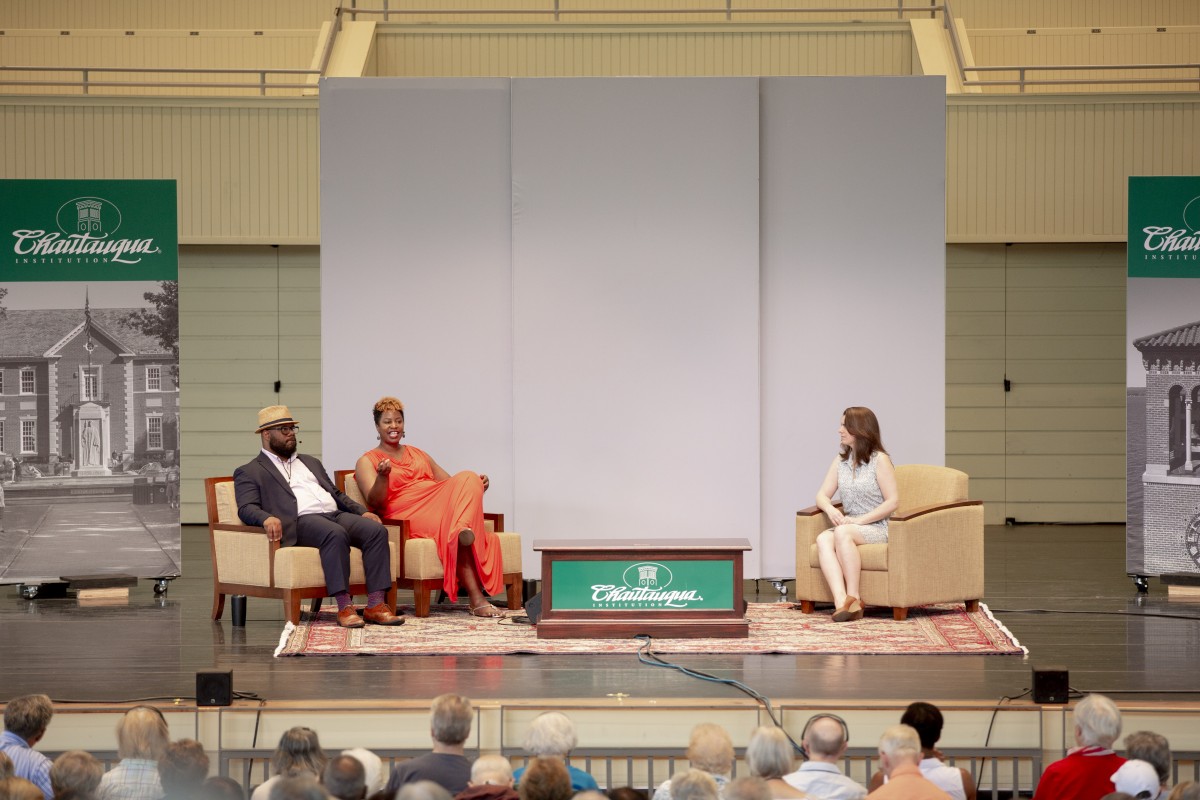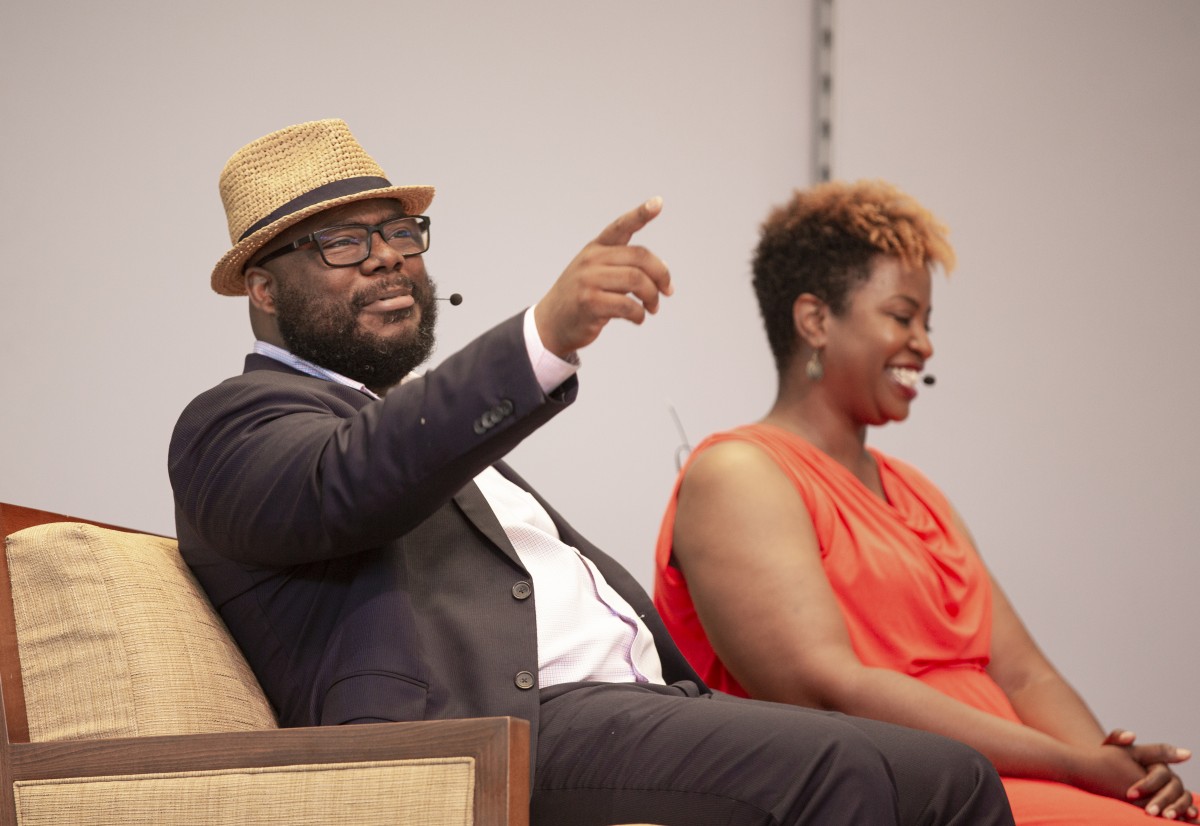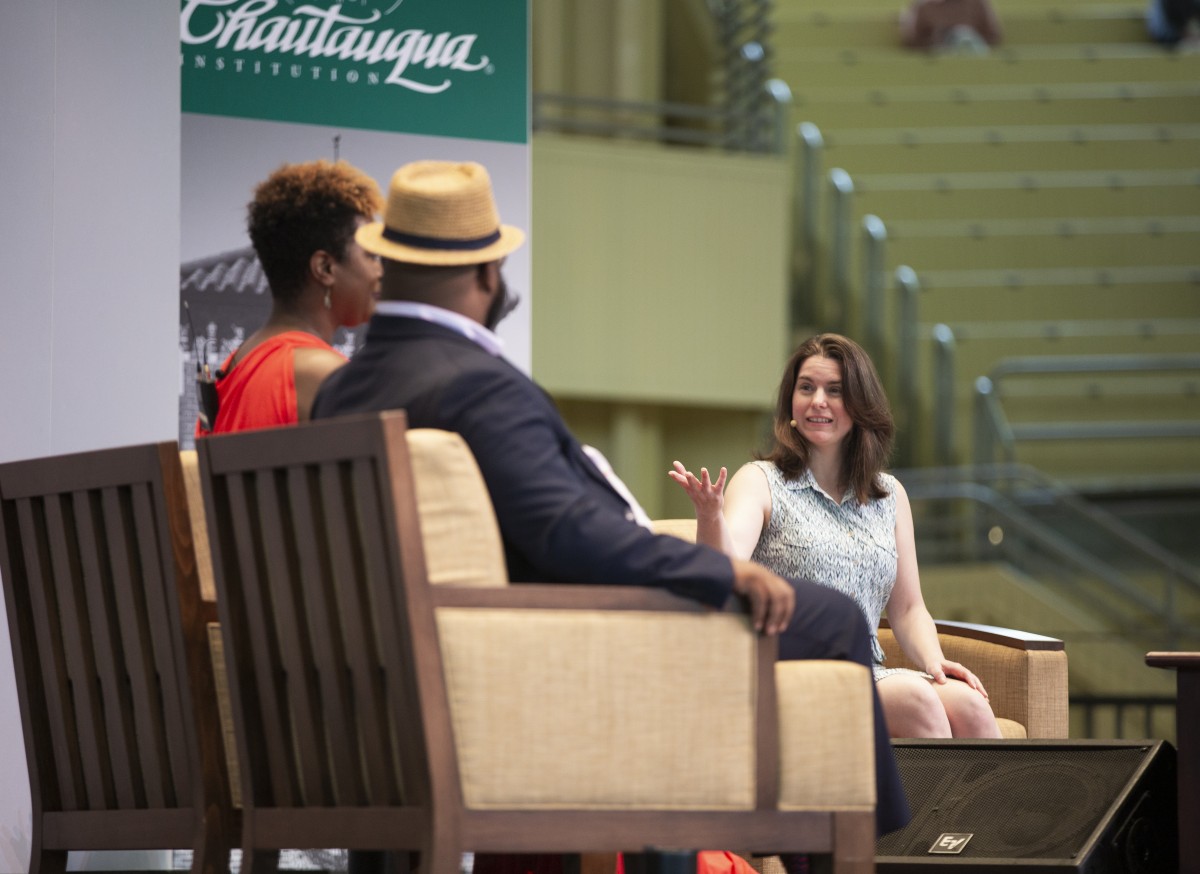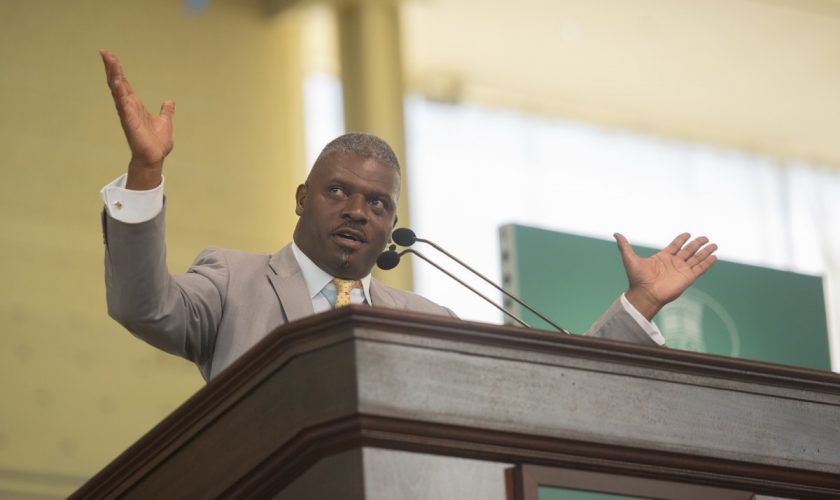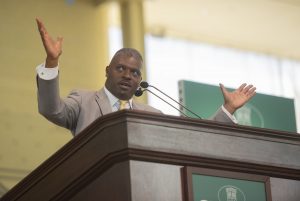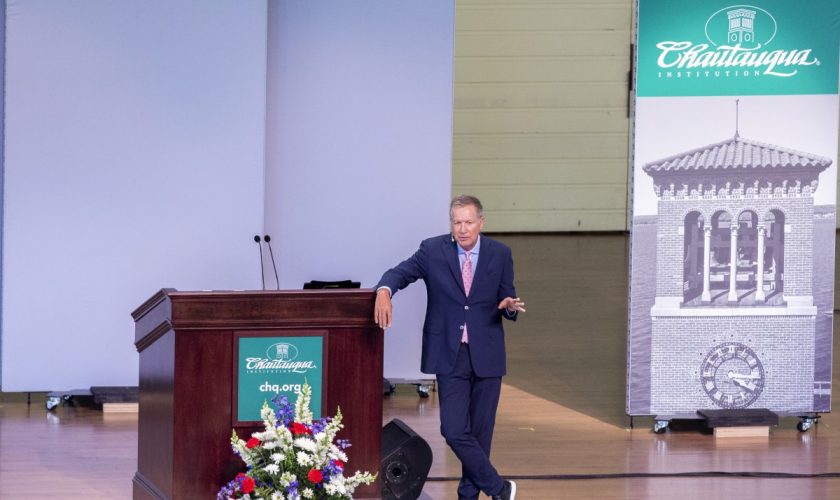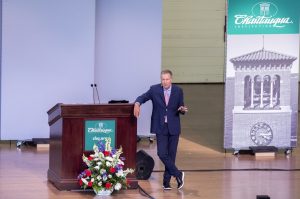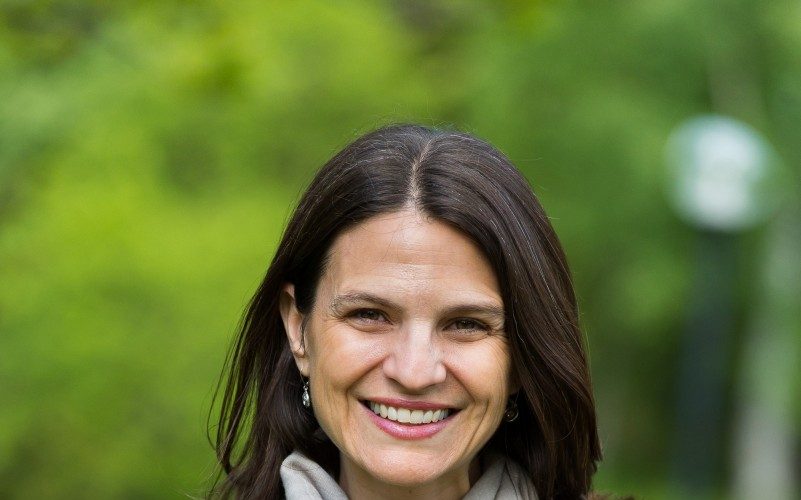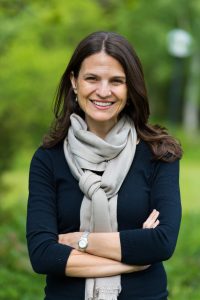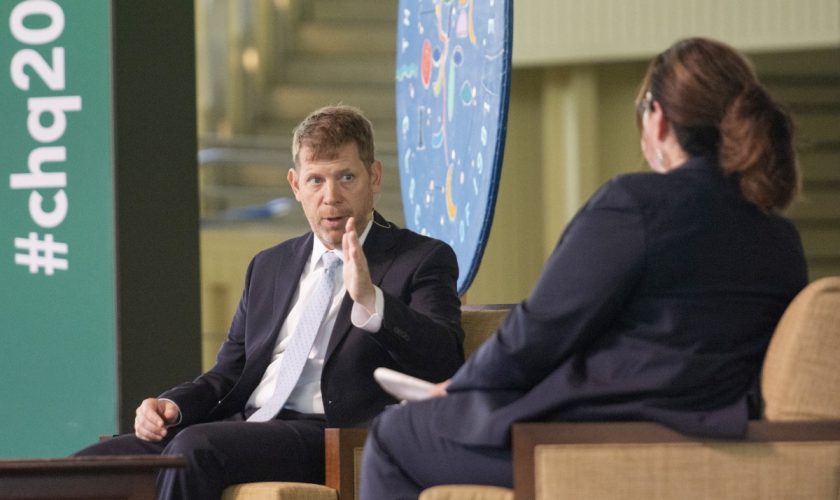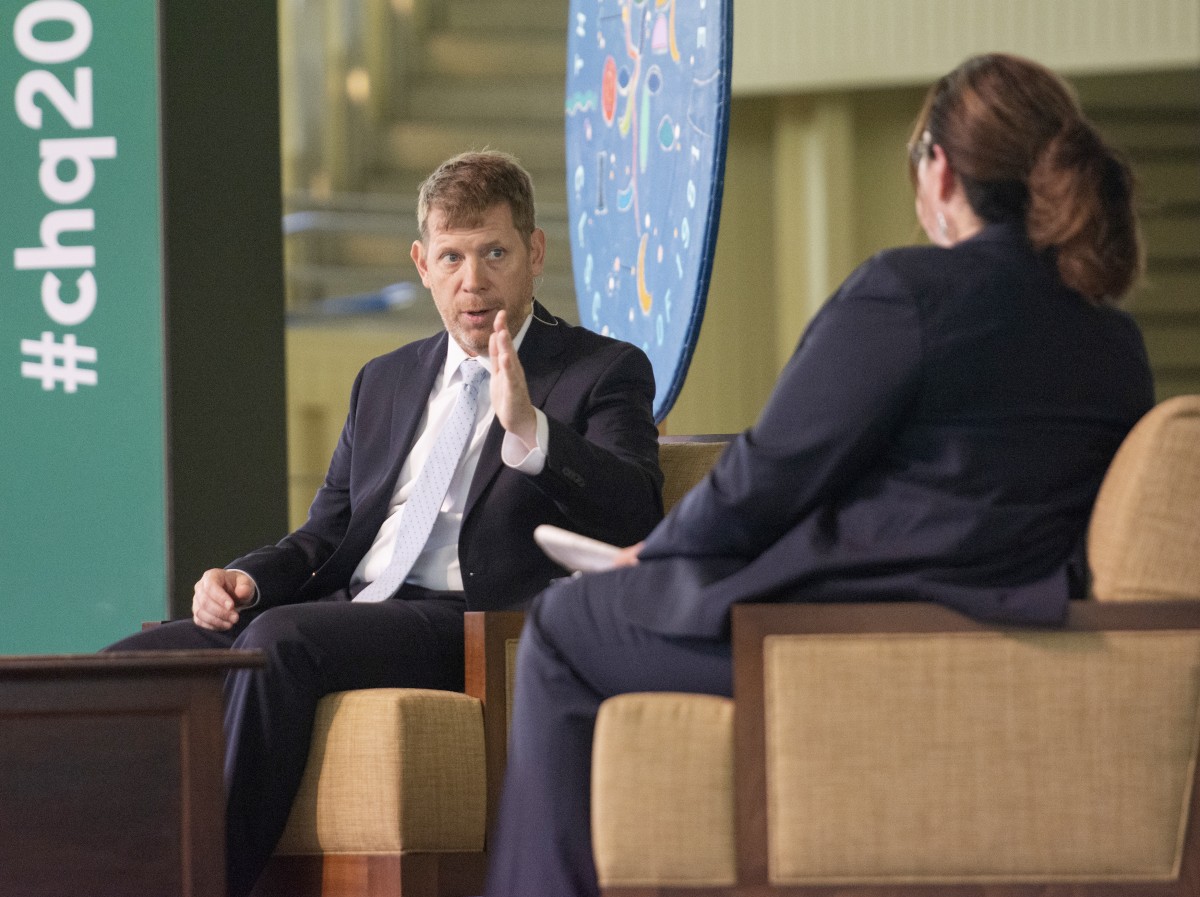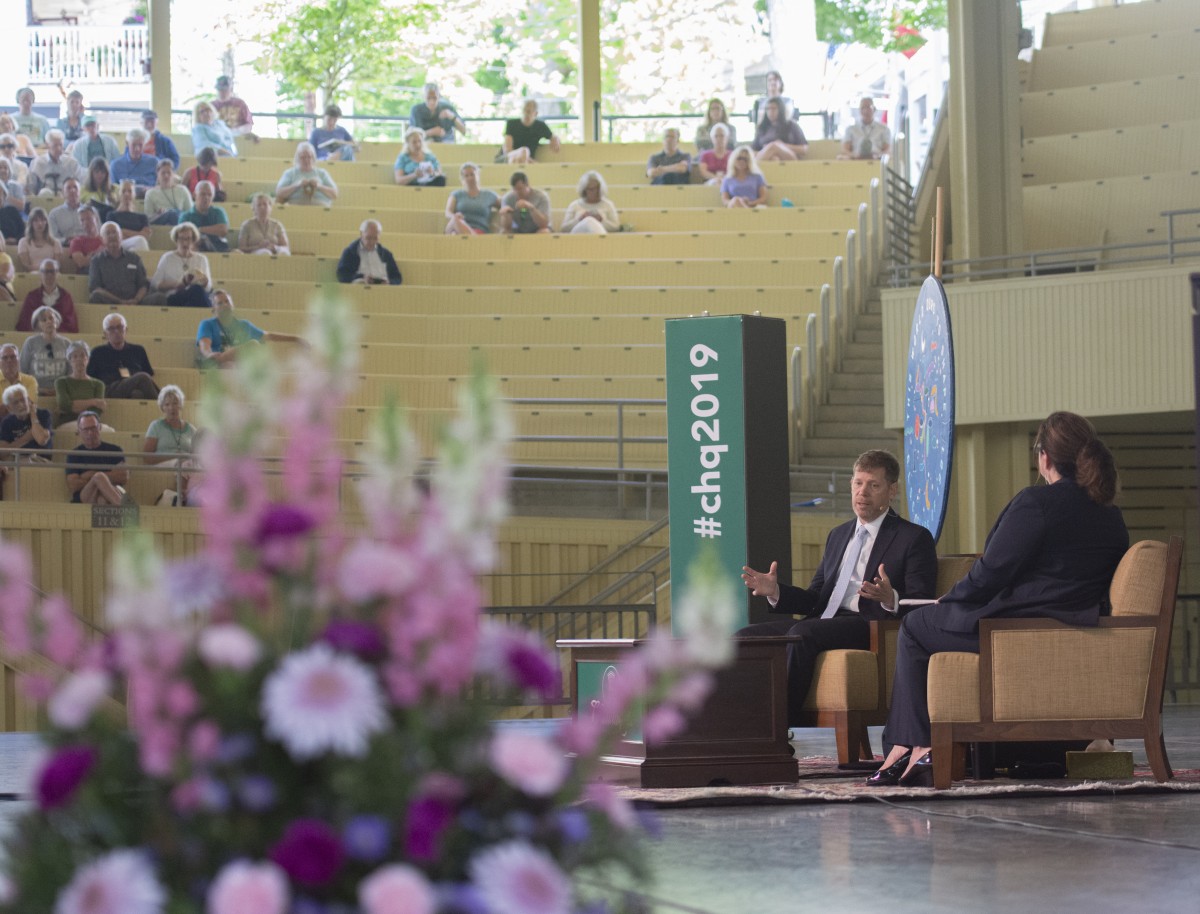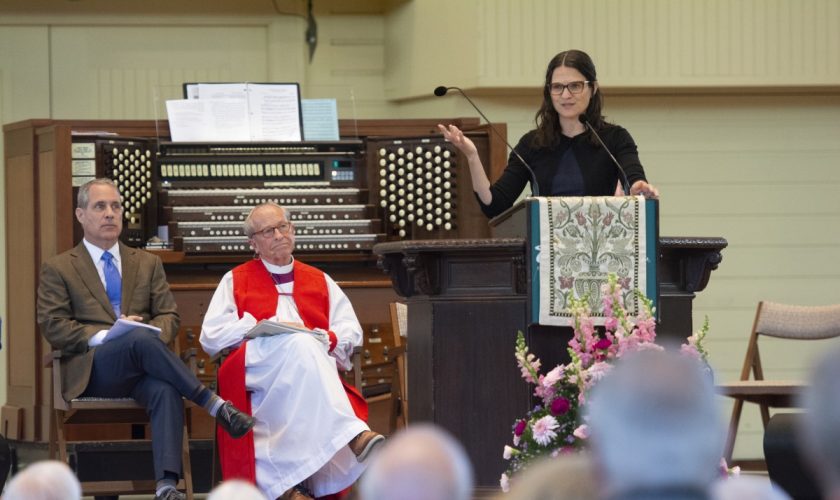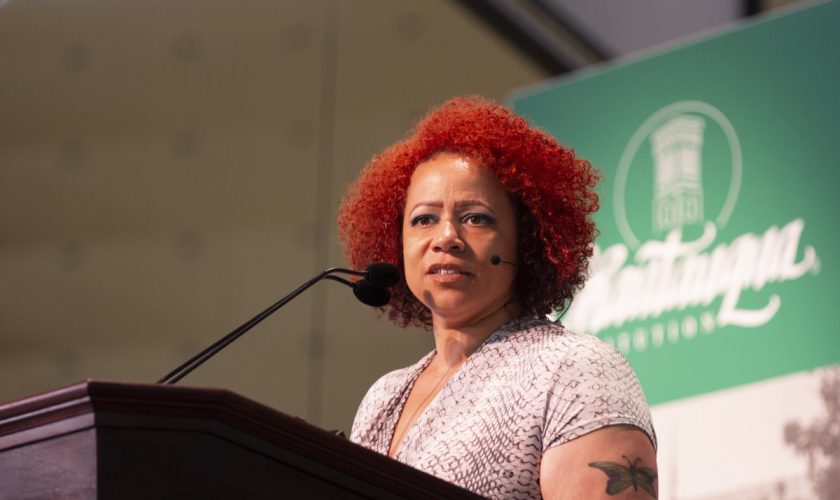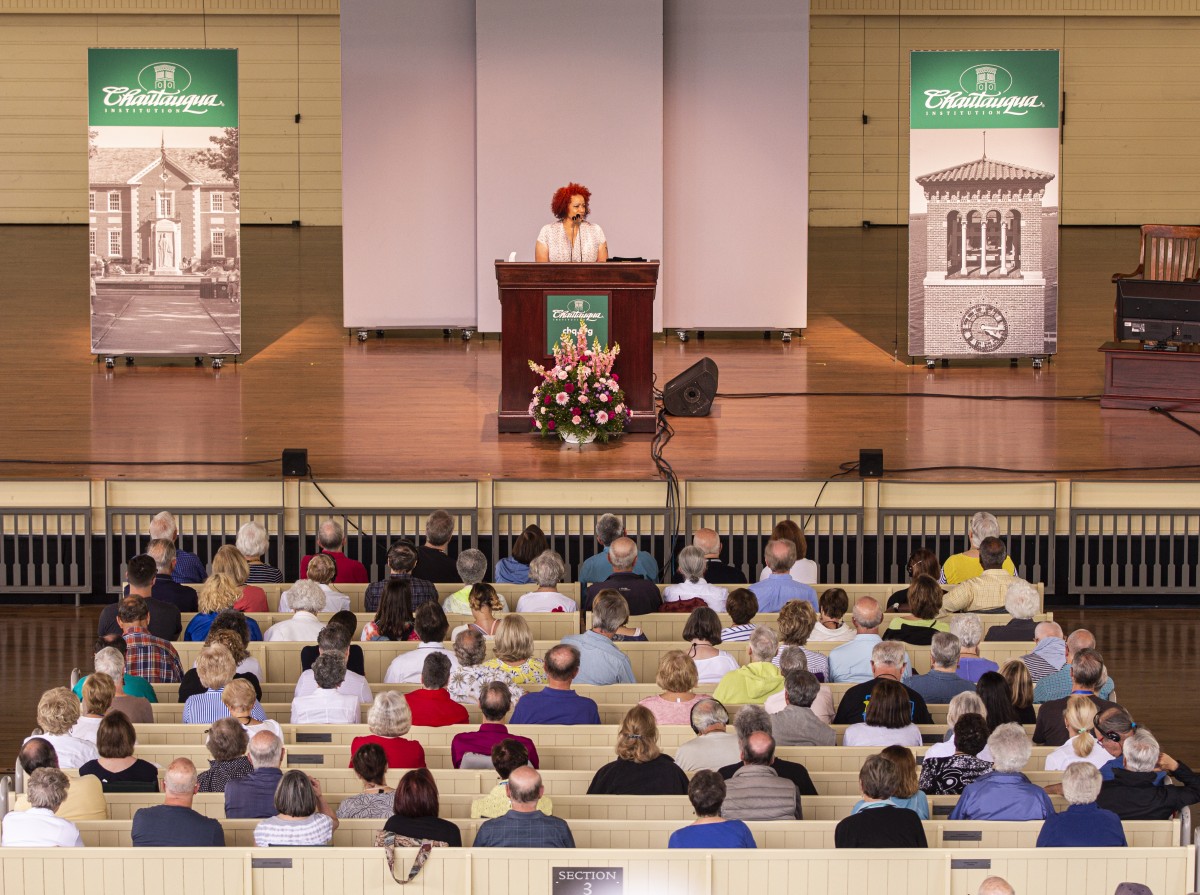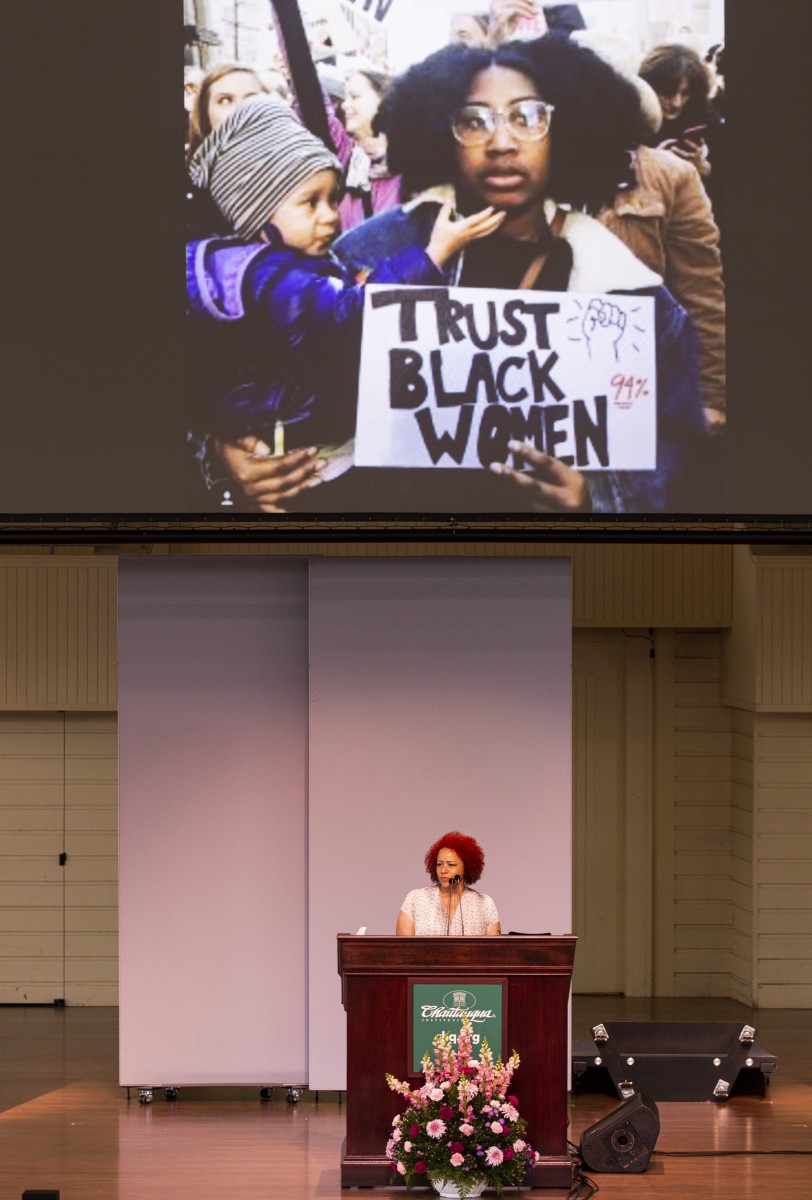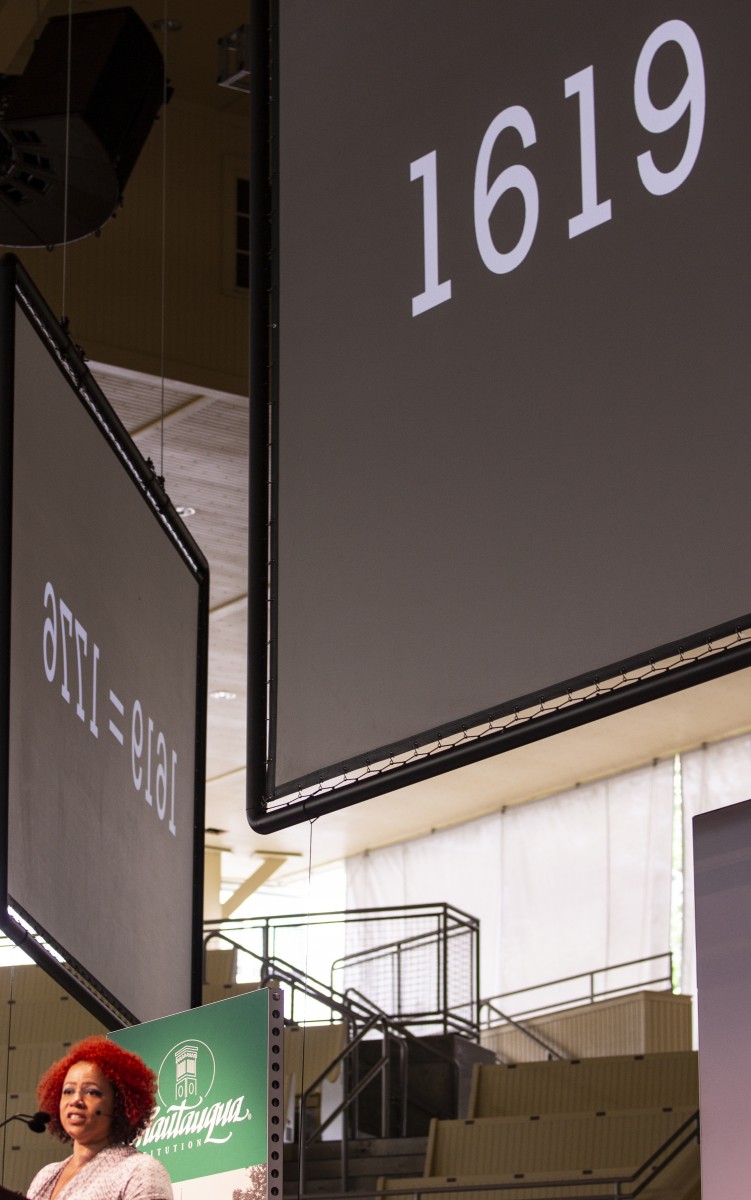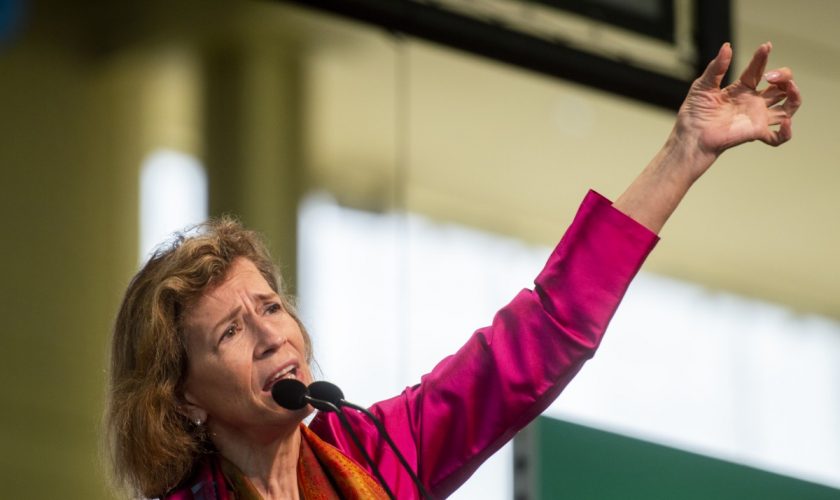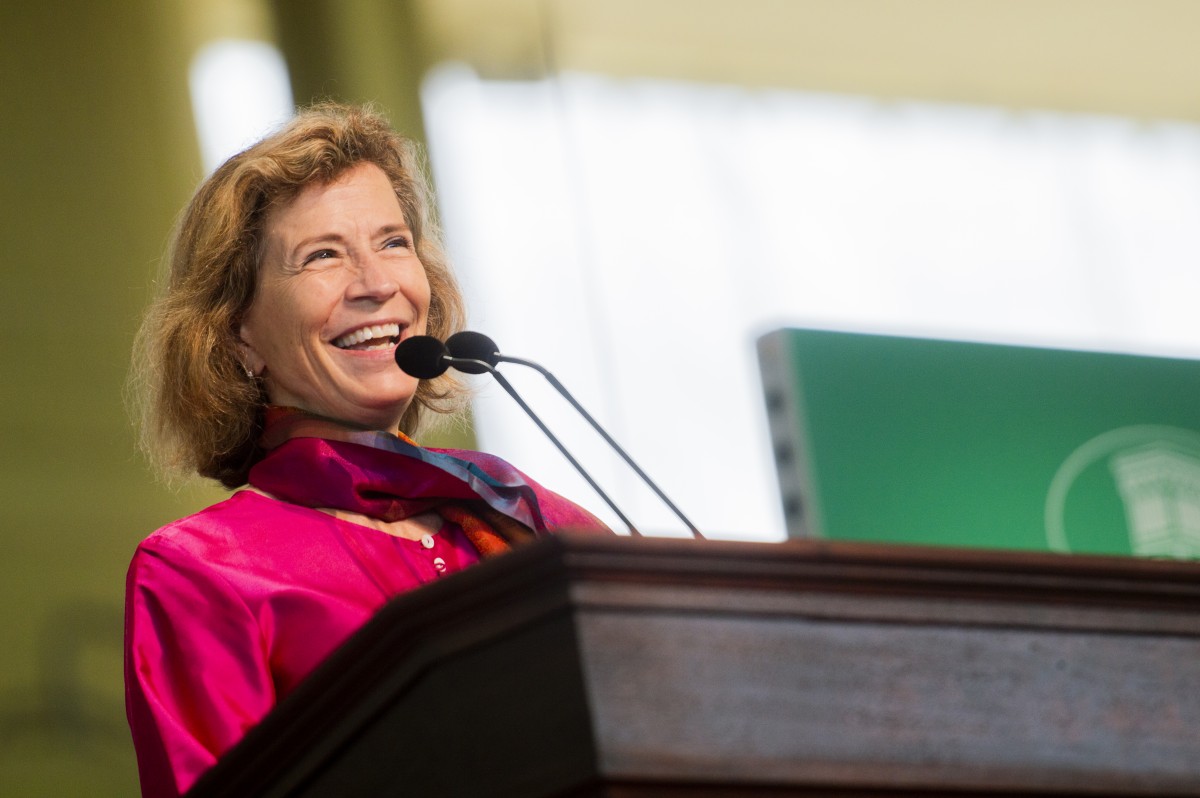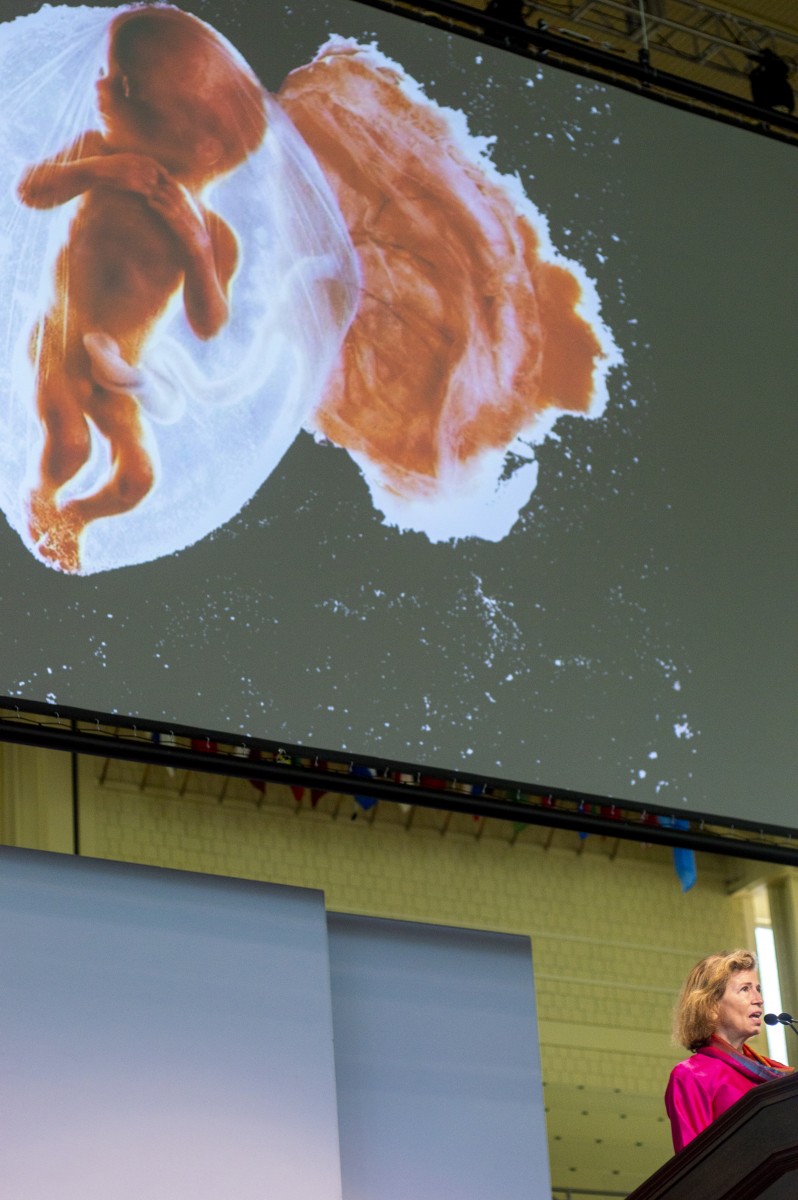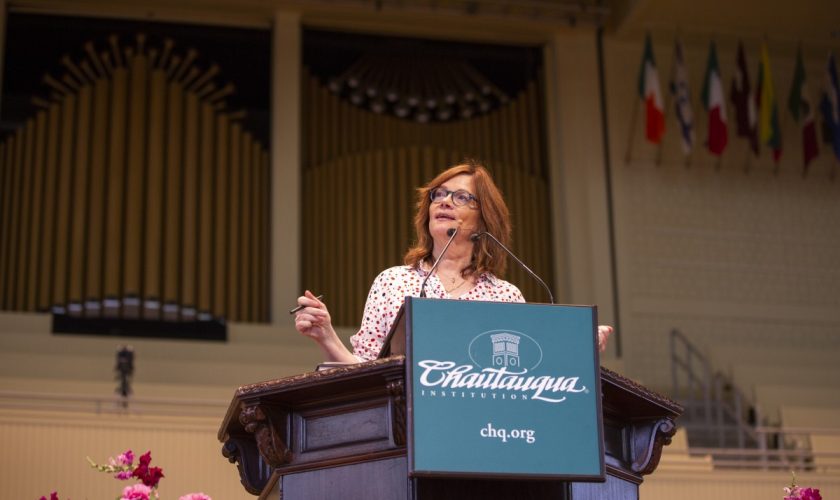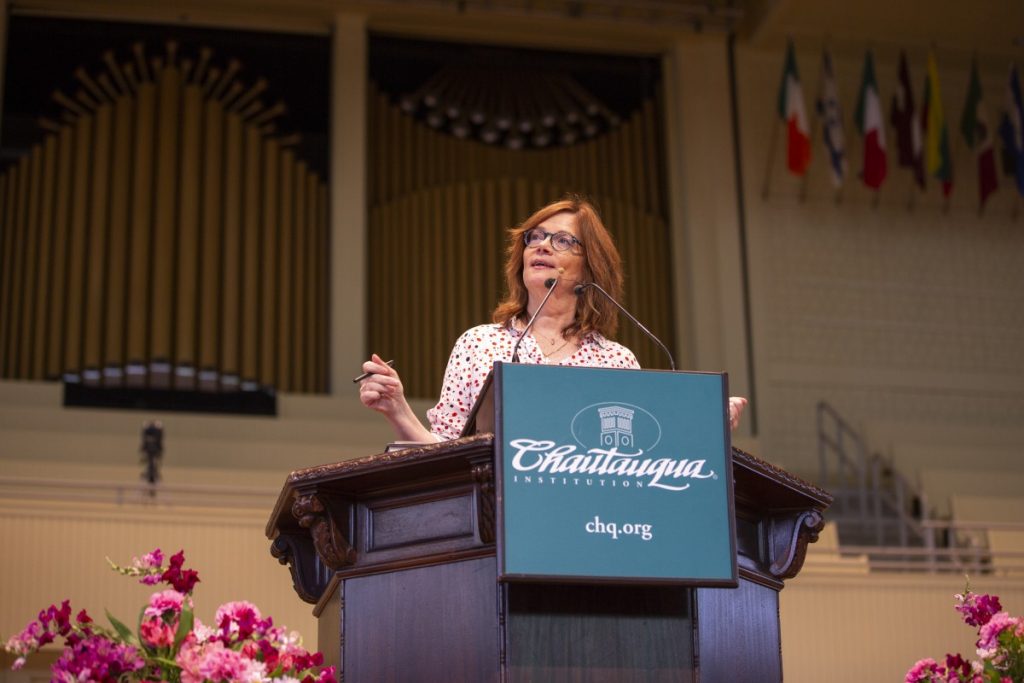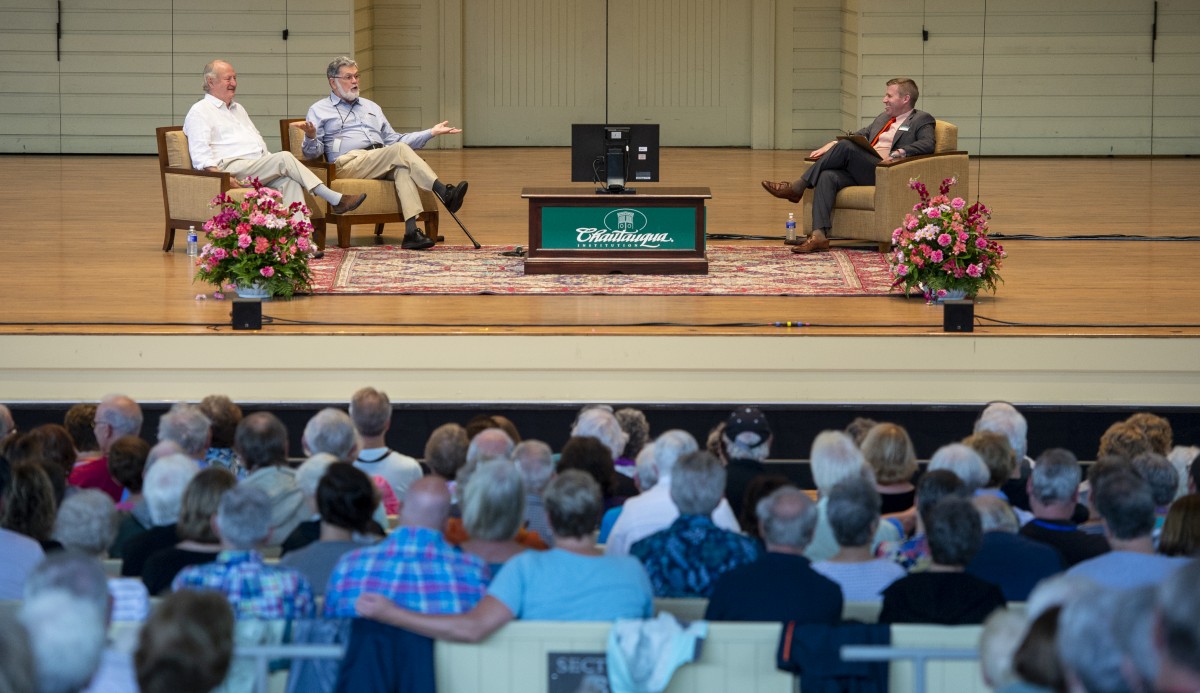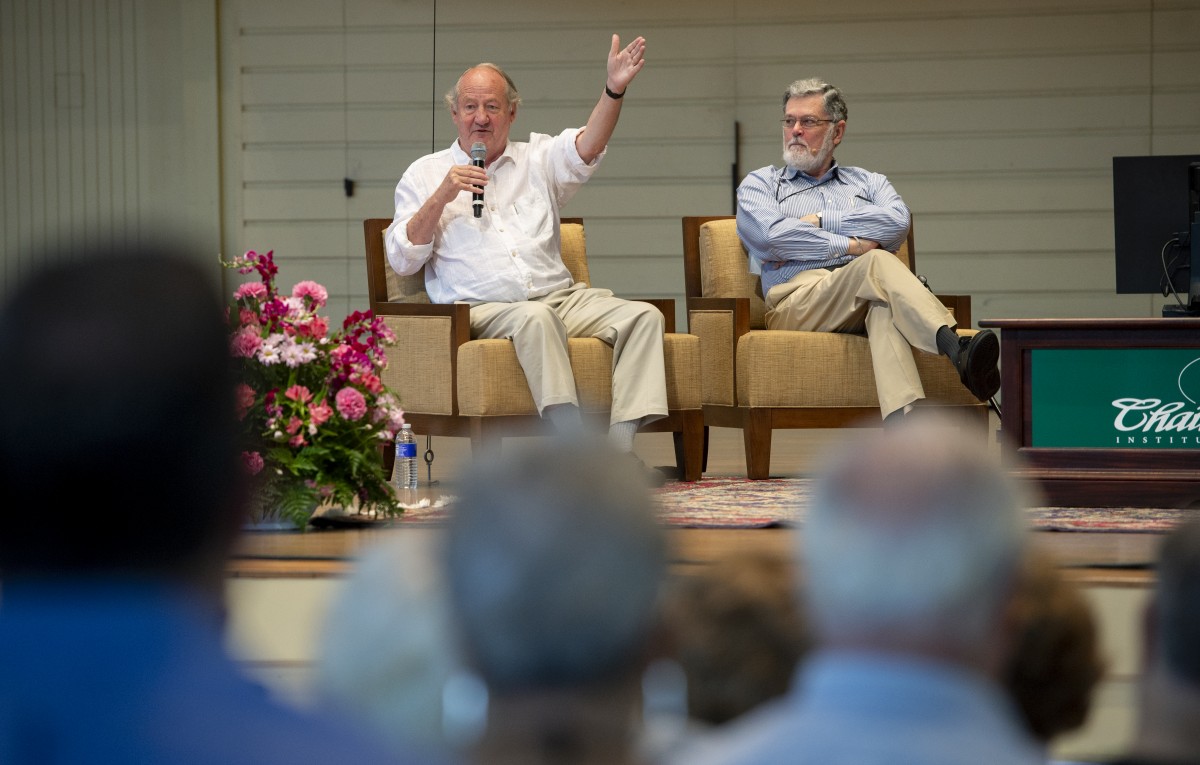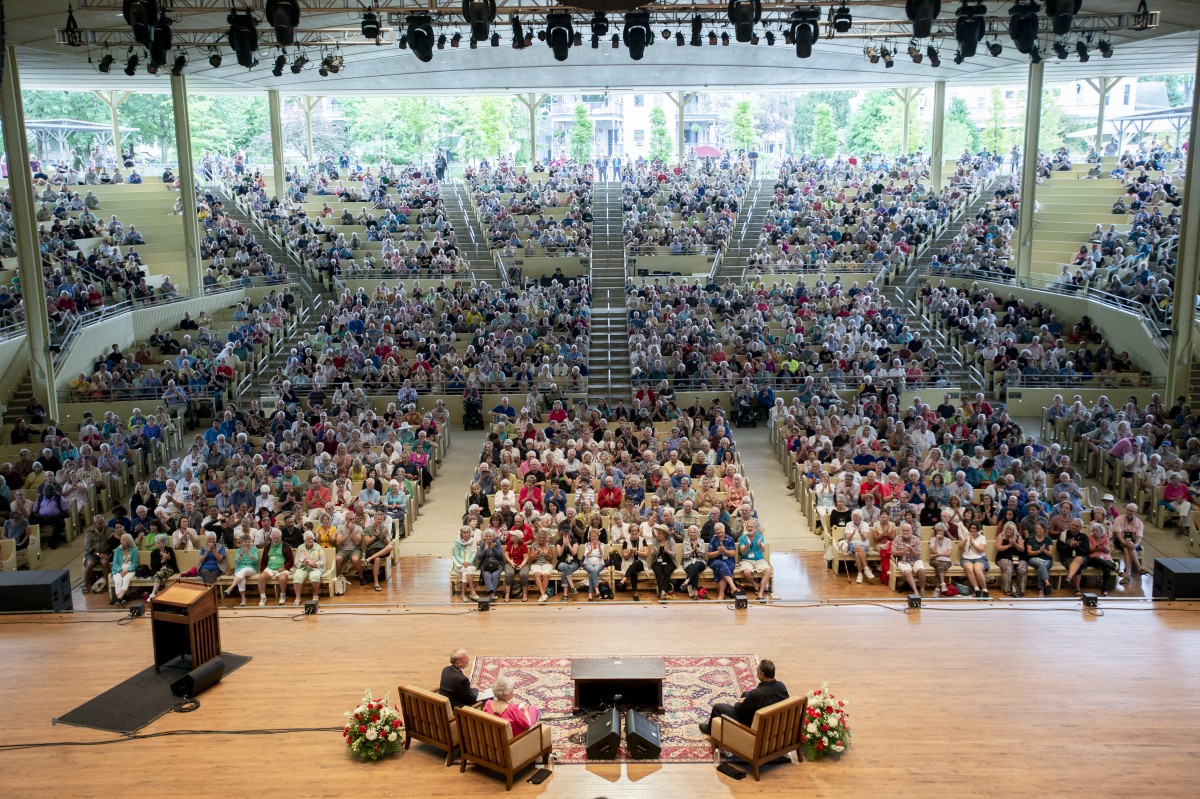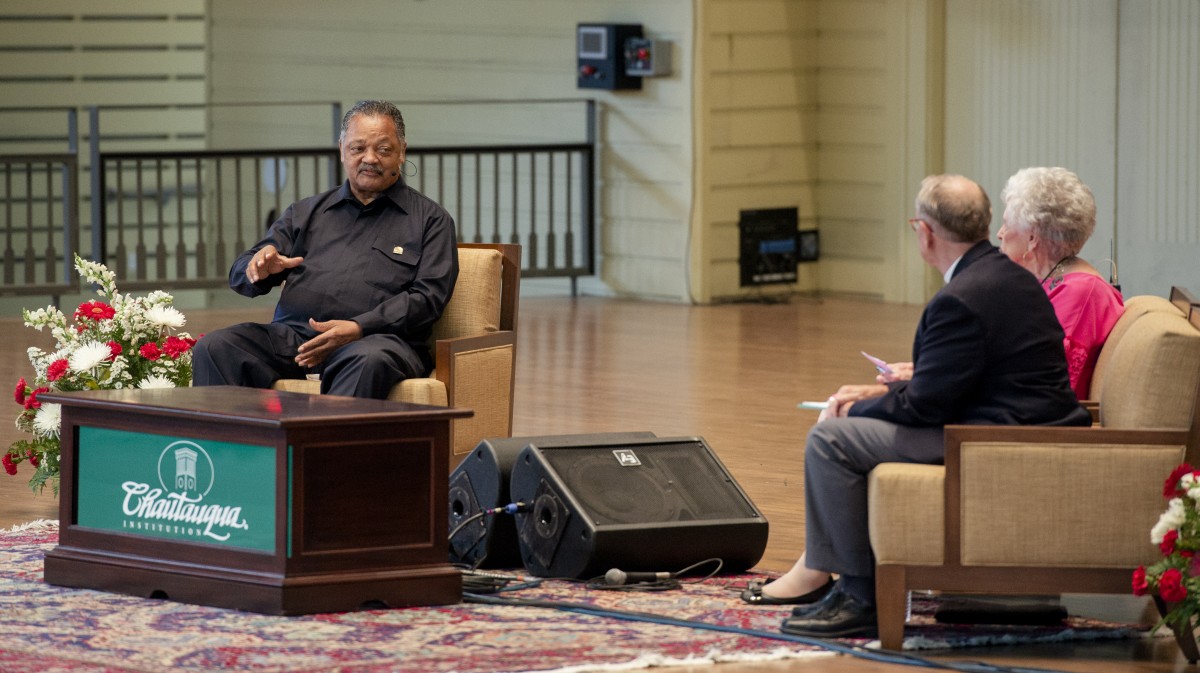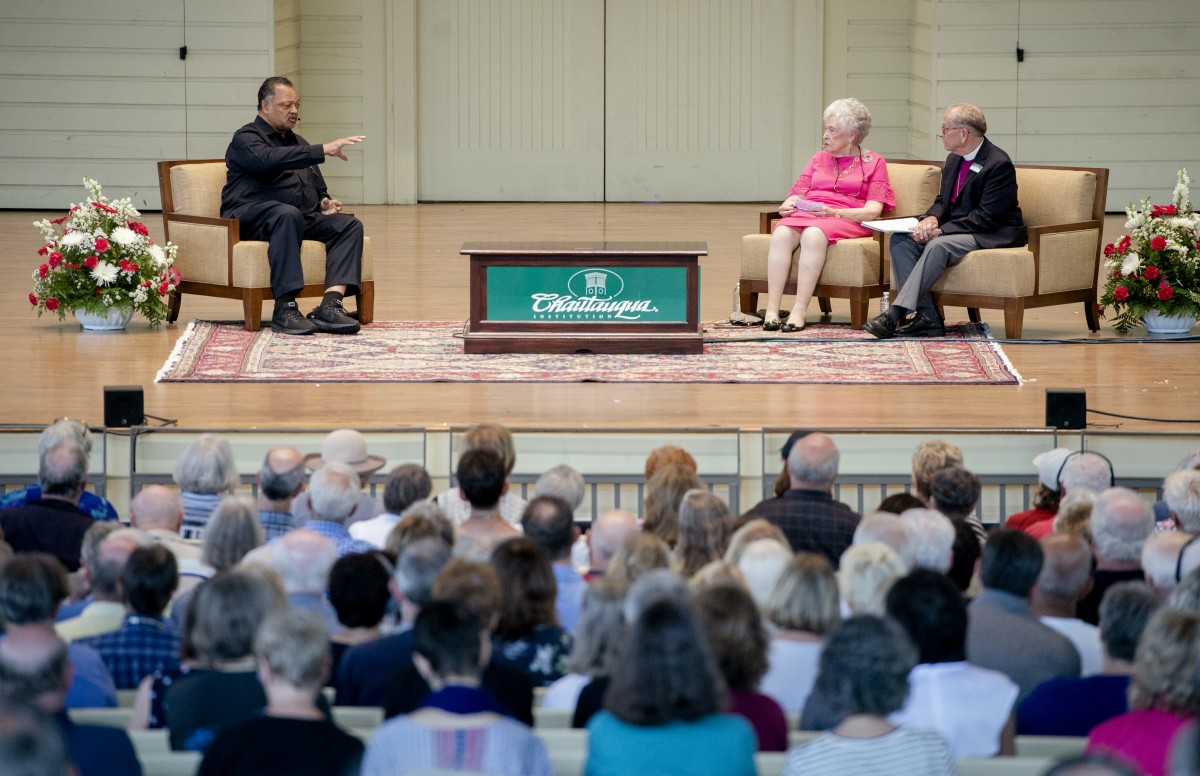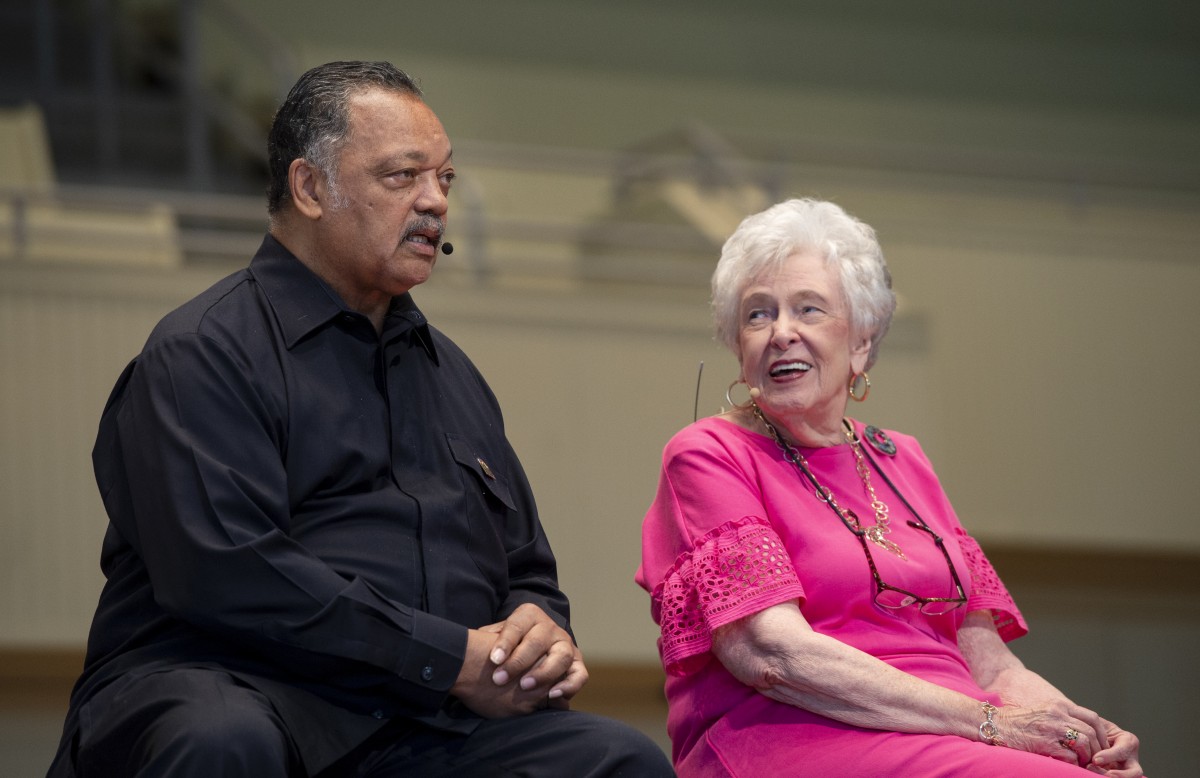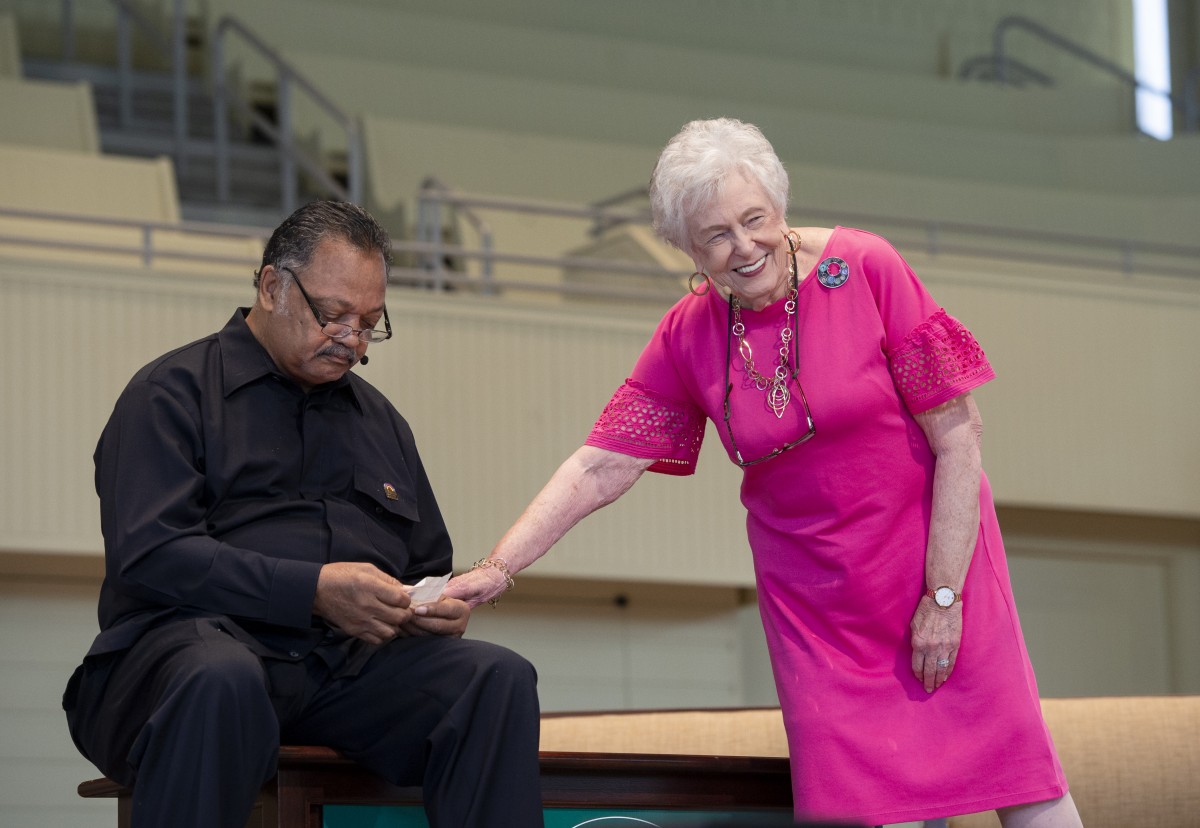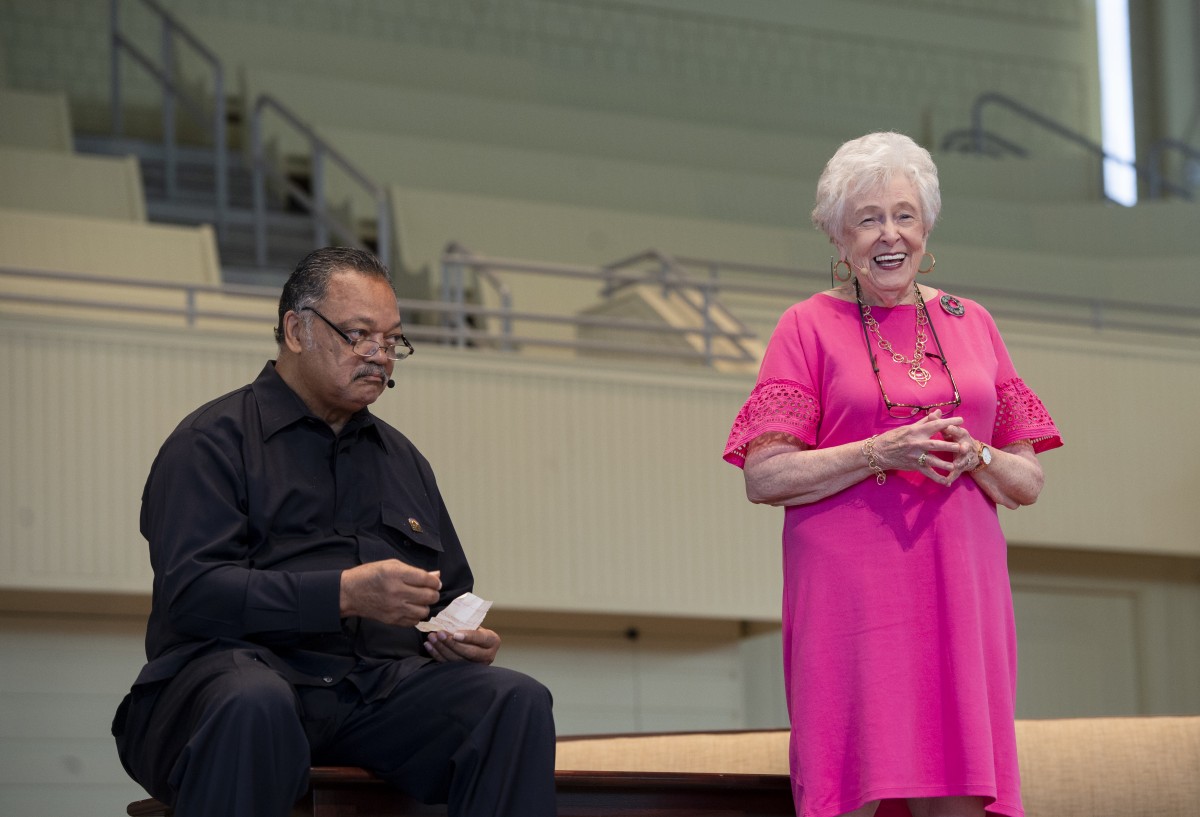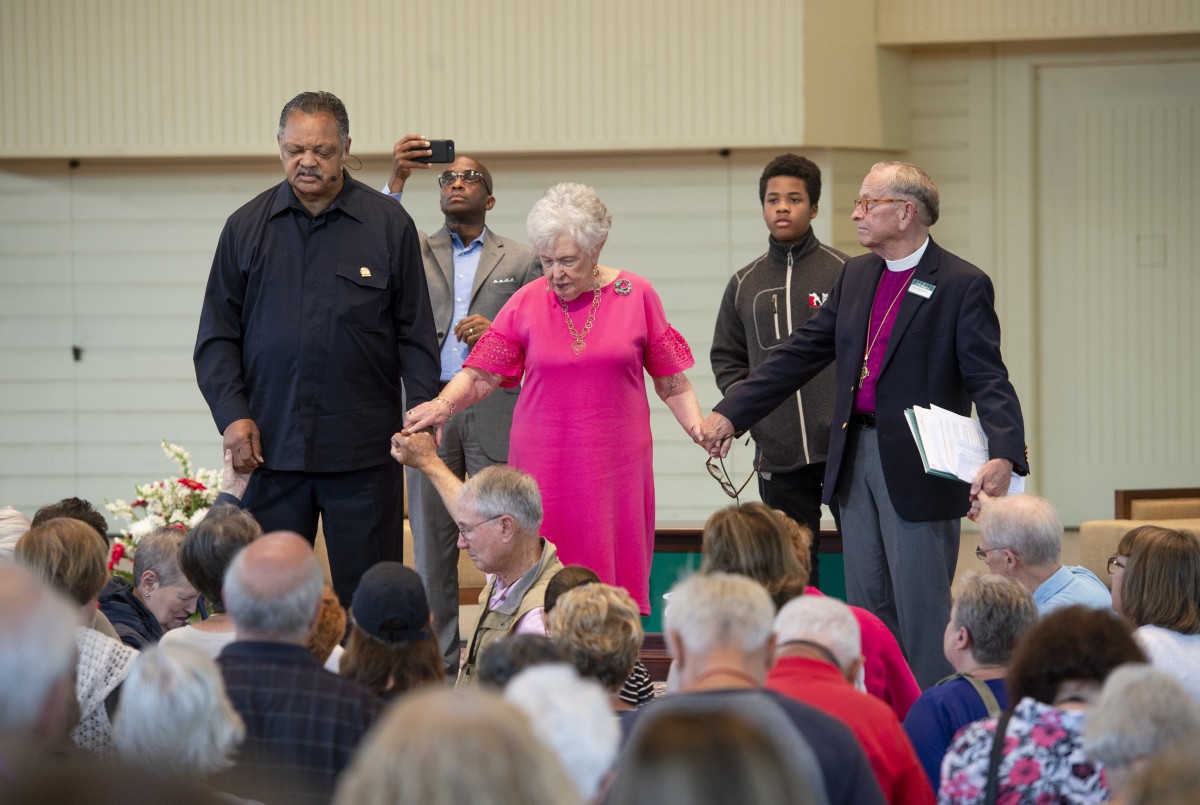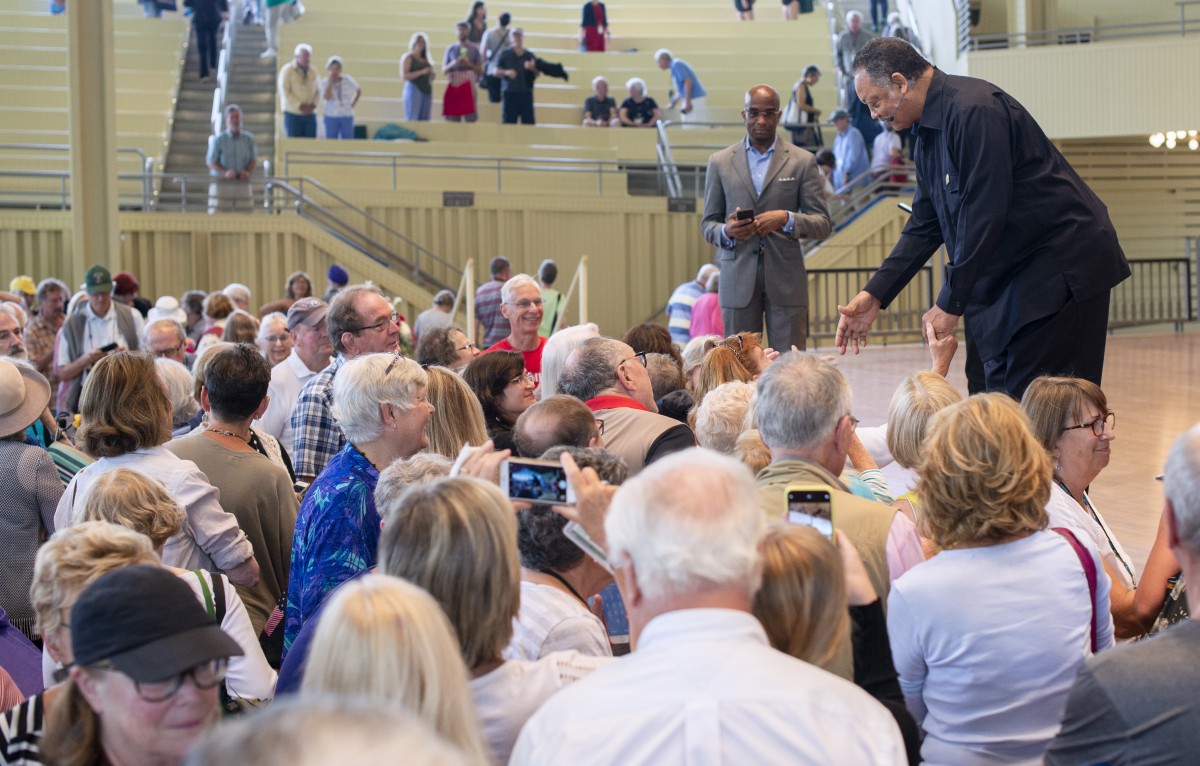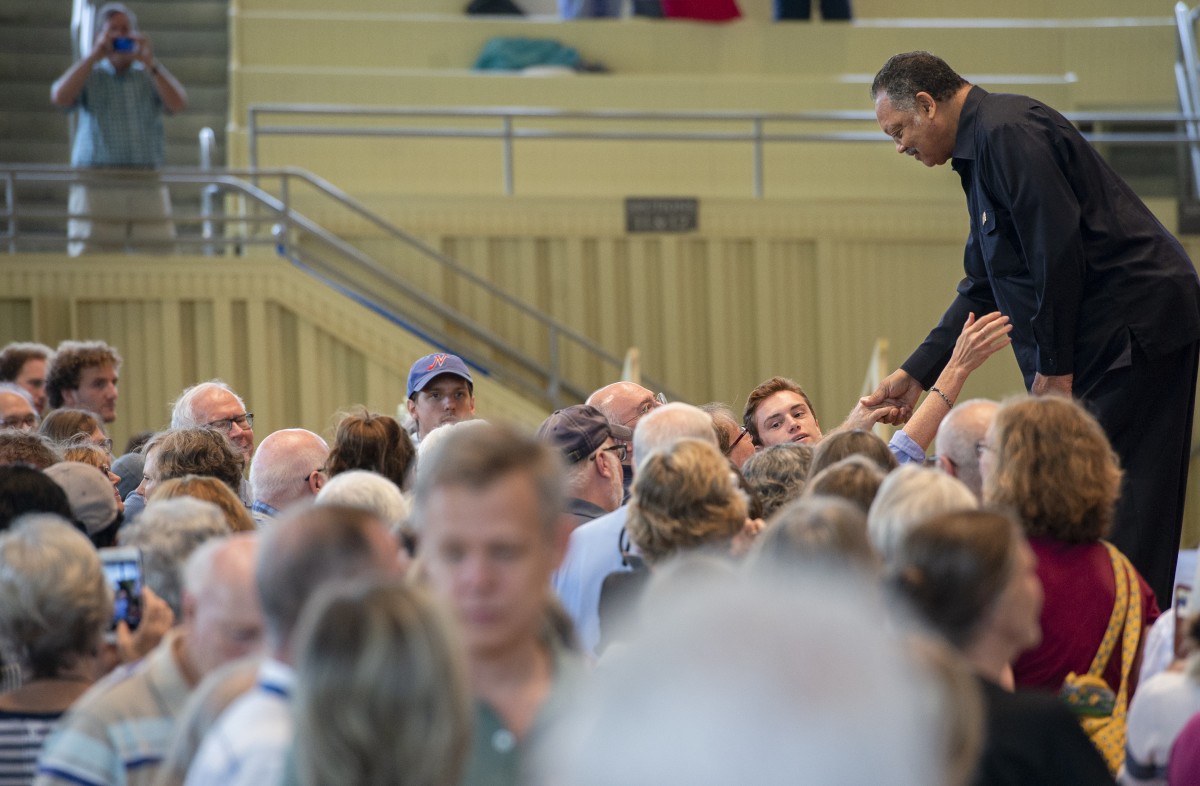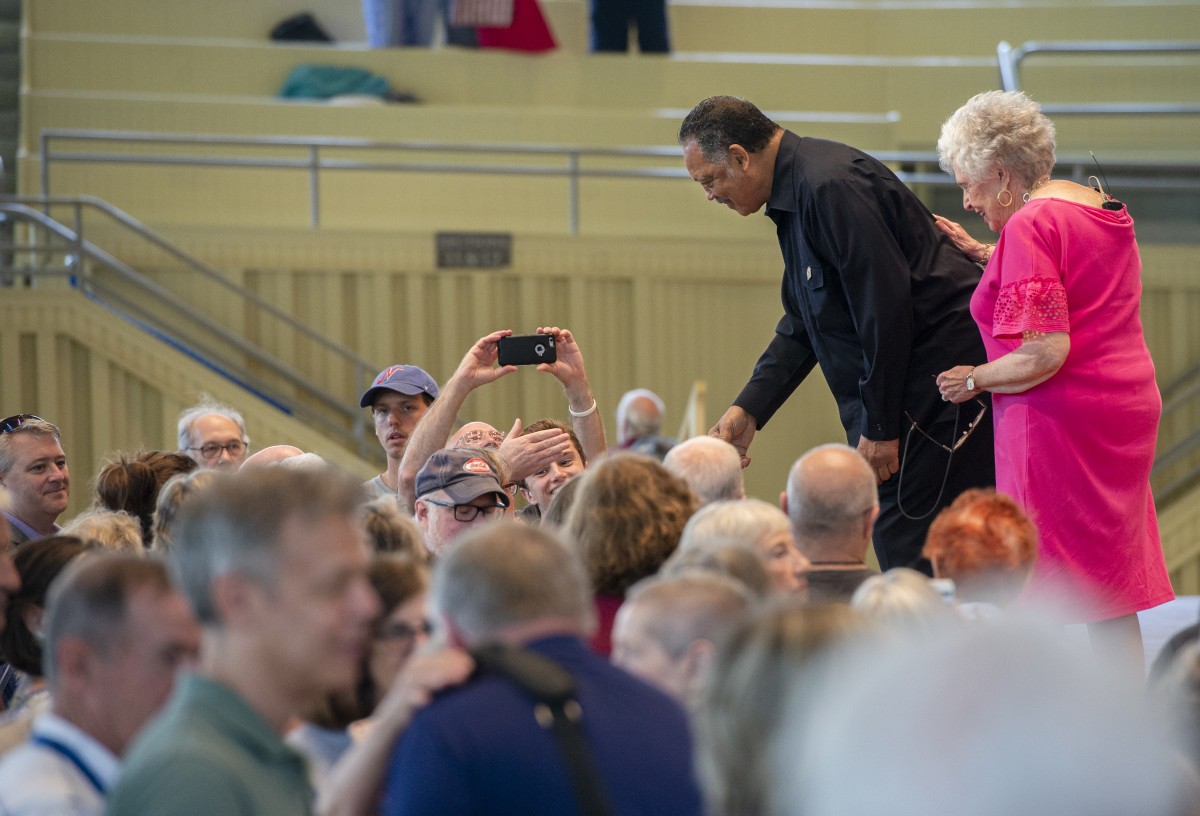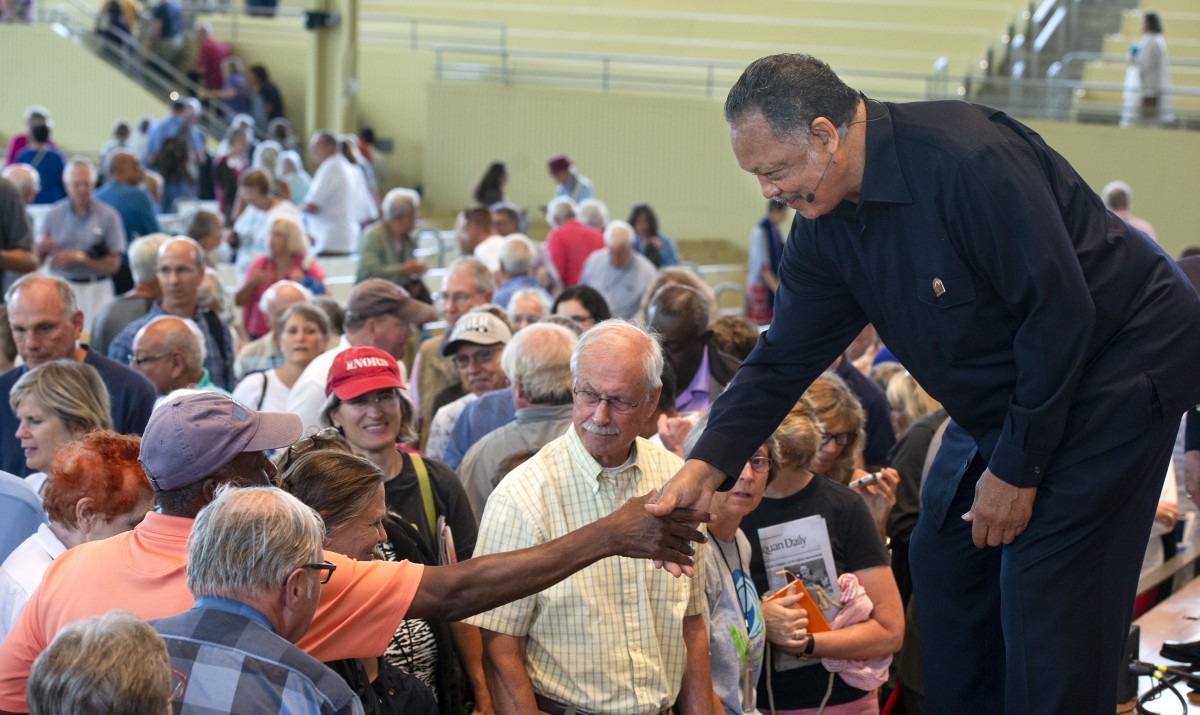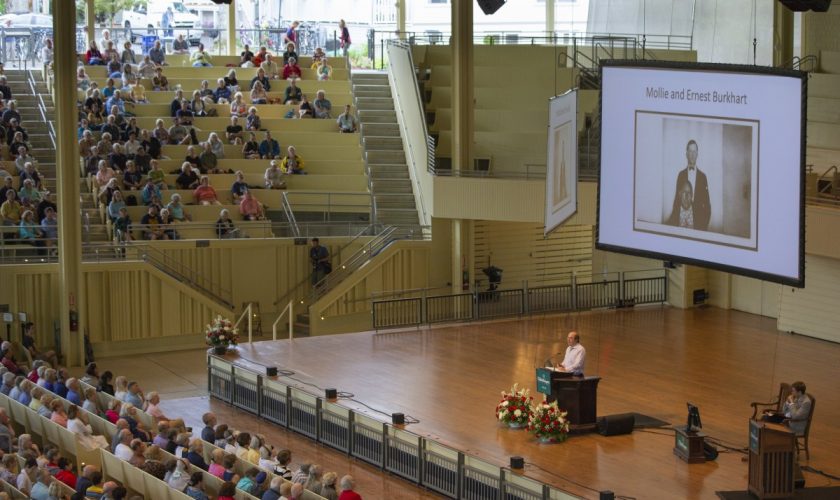
In the 20th century, the average life expectancy increased by more than ever before; more than all life expectancy increases over the course of human evolution, combined. This gives Laura L. Carstensen good reason to assume that much of the current population, young and old alike, will live to see their 100s.
But an uncertainty still lingers: What’s the best use of all this time?
Carstensen, Stanford University professor and founding director of the Stanford Center on Longevity, discussed SCL’s new and improved map of life at the 10:45 a.m. morning lecture Monday, July 15 in the Amphitheater, opening Week Four, “The New Map of Life: How Longer Lives are Changing the World — In Collaboration with Stanford Center on Longevity.”
Life has been short throughout the course of human evolution. In the beginning of human existence, the average life expectancy was 18 years. By in the late 1800s, life expectancy had increased to 47. Throughout the 20th century, it made its most dramatic increase to 77. Now, it is 79.
“The speed with which these changes took place, my colleagues and I maintain, is the reason that aging feels so tense for many of us — that it feels different and awkward and frightening,” Carstensen said. “It’s brand new. In an evolutionary sense, this happened in the blink of an eye.”
As life expectancy increased over the last century, fertility rates dropped by half. The decreased fertility rates created aging societies — societies where there are more older people than younger people. In 1900, about 4% of the global population was over 65. By 2030, over 20% of the population is projected to be over 65.
“These are game changers,” Carstensen said. “These numbers will change every aspect of life as we know it.”
The story of longevity doesn’t start with the elderly; it actually begins with babies.
In 1900, 25% of children born in the United States died before they reached 5 years old. During that time period, population graphs were pyramid shaped because the age distribution got smaller at the top, which represented people who made it to old age. In the 20th century, those pyramids began to reshape into rectangles.
“What this means is we have created a world where the vast majority of little ones are going to have the opportunity to live their entire lives,” Carstensen said. “This is an extraordinary cultural achievement.”
Culture changed as the world was redesigned to support young life. Carstensen said past generations deemed the high infant death rates unacceptable, and in response, they invested in science and technology to understand ways to improve children’s chances of survival.
Those previous generations studied medical science to understand how diseases spread and created vaccinations to prevent young people from ever having to experience certain diseases. In addition to medical science, culture changed — not in the sense of languages and food, but social norms and practices.
“There are some historians about this era who write that you have your garbage collectors to thank as much as your physicians for longer lives,” Carstensen said. “Improved sanitation greatly contributed.”
As sanitation improved, other aspects of life did too. Milk was pasteurized, water was disinfected. Electricity was distributed, and along came refrigeration.
“We came to understand nutritional needs and built nutrients into food fortification programs that virtually eradicated nutritional disorders like gout,” Carstensen said. “We didn’t ask every parent to change their practices. We made this an institutional practice; we built this into the food supply. The water became safer, and food was preserved as it should be.”
A society that recognized it had fewer children decided to invest in those children. Thus, public education became accessible in every state.
“Education is a better predictor of life expectancy than age,” she said. “It is an extraordinarily potent contributor to life expectancy.”
Longevity is also a story of cooperation, Carsetensen said.
“These changes, this effort to work together to improve the entire population, has resulted in a point in history where for the first time, five, and conceivably six generations, will be alive at the same time,” she said. “A 20-year-old male today has a better chance of having a living grandmother than a 20-year-old male in 1900 had of having a living mother. These are game changers.”
The prospect of more time doesn’t make humans as excited as Carstensen once thought. People are worried, but their worry is based on assumptions of very different times than their own. Aging used to be synonymous with deficits, but that downward trajectory is no longer apparent in current generations.
“There are many assumptions we have made about aging that are wrong,” she said. “There are some aspects of life that improve: emotional wellbeing gets better as people get older, our stores of knowledge go up and in the last 50 years, every birth cohort that has arrived at 65, has been healthier than the one before it.”
The number of diseases among older people are increasing; however, they’re mostly chronic diseases like arthritis because they take longer to develop.
Regardless of those diseases, older people are functioning better than ever before. Carstensen said people need to start thinking of aging as an increase in variability and heterogeneity.
Additionally, people are functioning better cognitively as they get older.
“People today in their 80s are testing like people in prior generations tested at 65,” Carstensen said. “People are doing better.”
Dementia rates have been falling since 1977. Between 2000 and 2012, incidents of dementia fell by 24% in the United States. Yet again, rates of dementia decreased among those with higher education, which is providing a buffer against brain disease.
Older people are also happier than younger people. They are slower to anger, they can regulate emotions better, they know how to solve emotionally charged conflict better, and are more grateful and likely to forgive.
“I want you to begin to imagine with me what a society might do with a growing number of people who are knowledgeable, functionally healthy and emotionally stable,” Carstensen said.
As people become healthier, fitter and more knowledgeable, they are also more likely to keep working. Carstensen said an aging workforce is not the biggest change in society. Instead, it’s age diversification in the workforce, as six birth cohorts are currently working at the same time.
“It looks like mixed-age workforces may be more productive than anything we’ve ever seen in the past,” she said.
Besides the advancements that have already been made, there is promise of further improvements in the 21st century.
Carstensen showed a cover photo of TIME magazine with the headline “Can Google solve death?” Some scientists have argued that immortality is possible, according to Carstensen, but for her, the goal is not to stop aging — the goal is to slow it down.
“We are beginning to understand what aging is in a biological level, and then we can affect it,” she said. “Techniques like parabiosis and senolytics are really encouraging.”
Senolytics focuses on the destruction of senescent, or aged, cells. As one ages, senescent cells stop dividing and secrete inflammatory proteins that destroy or impair the function of healthy cells around them. New research proposes the removal of some of those senescent cells to promote healthy longevity.
In terms of technology, Carstensen is excited about flexible polymer tattoos that may replace Fitbits and Apple watches. Connected by bluetooth, the tattoos can monitor respiration, glucose, heart rate and temperature, and warn the user of potential health problems.
An extraordinary amount of evidence shows that the best thing one can do for aging is to keep moving. Carstensen said if the effects of exercise could be bottled, it would be the most prescribed and expensive drug on the market.
“When you exercise, it improves mood, it improves bone strength, it improves your heart and lowers your risk of cardiovascular diseases,” she said. “Exercise. This is it. What we need to do in the meantime, while we wait for scientists to figure out what to do about some of this aging stuff, is keep moving.”
Carstensen doesn’t lose a minute of sleep over the prospect of living forever; what keeps her up at night is the potential cost of these medical and technological advancements and how broadly they will be distributed in society.
“I do think that, to an extent, if we find ways for the top 10% of people in the world — the most educated and affluent — if we find ways for us essentially to live better and we live better and we leave the rest of the population in the dust, we will have inequities and disadvantaged differences that would make today’s experience hell by comparison,” she said.
The SCL is working toward a “New Map of Life” to prevent those drastic inequities. Carstensen said the first step to their design was asking people to envision what a high quality, satisfying, century-long life could look like.
“You cannot achieve what you cannot envision,” she said. “Today, we are not doing a good job of envisioning century-long lives as lives that are flourishing.”
Carstensen hosted a meeting of 50 experts, including academics, architects, climate scientists, educators and pediatricians, who collaborated to envision the possibilities that might come with longer lives.
They started by mapping the basic stepping stones of life, such as school, marriage and retirement. The team noticed there was a huge blank spot for the 30 years after retirement. As Carstensen asked people what they would do with those 30 extra years, no one said they would want to use them at the end of their lives. Instead, people said they would add them to the years they raised kids or to time spent in high school. Some said the years belonged in early childhood, others said they would work multiple jobs or take multiple sabbaticals throughout their careers.
Castensen said there are no right answers to her question, but there is a clarification: Younger generations have just as much to do with longevity as older generations.
“Find ways to use this growing population of even-handed people who can address some of the greatest problems facing the world today,” she said. “We need to find ways that having more older people makes life better for the youngest among us.”
The next time someone sees kids playing outside at their local preschool, Carstensen hopes they will not only view them as kids, but as the first centenarians of the 22nd century. More importantly, she wants people to realize it is their job — now — to build a world that will support those kids “all the way through.”
“This is hard,” Carstensen said. “It is going to be hard. But I assure you, the greatest risk of failure is setting the bar too low.”

